|
One warm day, I took my 2-year old son to a downtown playground. This particular playground was small, but it had one large metal slide that many kids were going down. My son and I were no strangers to playgrounds. We took advantage of them during the Pandemic. We’ve been to many in all different neighborhoods. The platform to reach the top of the slide was steeper than normal stairs, but my son was doing his best to tottle to the top. However, I still hovered over him to ensure that he was able to go down the slide. After doing this a few times, I sheepishly noticed something. I was the only mom doing this despite the fact the other kids my son’s age and, perhaps even younger, were all going down this slide without a parent being with them every step of the way. I also noticed something else. Although there was no orderly line and there appeared to be some tossling among the kids, everyone eventually got a chance to go down the slide because some of the older kids had the younger kids’ backs, including my son’s. These kids were clearly well versed in the art of playing without constant parent supervision. I was impressed. I took a step back and stood somewhat near the other moms who were engrossed in conversation. I started to become intrigued by the cultural dynamics of this playground and all playgrounds for that matter. As a white, American mom to a biracial son (half Black, half white), I am used to mostly white playgrounds where the parents stand close by to keep a watchful eye on their kids in order to ensure that there is fair turn-taking and to resolve conflict the moment it shows up. This playground was different. It was mostly children and moms of color who were speaking a variety of languages. Upon first glance, an outsider might make the ignorant assumption that these moms were being neglectful, and the kids were trouble who never learned proper turn-taking skills. But under a more critical lens, there was a strong sense of community fostered among both the parents and kids. I loved it. And that’s when I vowed to raise a more culturally competent kid.
|
| Lauren Barrett is a multi-passionate mom working to help all parents become their best selves and build positive relationships with their kids through mindful parenting. She has a degree in deaf education and a Master’s in Reading Education. She is a high school teacher of the Deaf and hard-of-hearing by day, a cross country coach by the afternoon, a writer/author by her son's nap times, and a full time mom to an amazing preschooler. Lauren is a 3x author of the Add One-A-Day 30 Day Challenge, children's book, Henry's Hiccups, and parenting guide Now What? Mindful Checklists for Life's Hard Parenting Moments, a blogger at Lauren Barrett Writes, and has been published on sites like A Fine Parent, Pregnant Chicken, Pop Sugar, Her View From Home, and Scary Mommy. She loves her faith, running, visiting MLB stadiums with her husband, chocolate, scrapbooking, pretending she would actually do well on the Amazing Race, re-watching The Office, listening to Bobby Bones, and helping out all moms. She lives in North Carolina with her husband, James, and son, Henry. Follow her on Instagram at @laurenbarrettwrites, and get her free guide on what to do during the middle of a tantrum. |
0 Comments
I’m a special education teacher. One of my job’s is to write individualized goals for each of my students.
For example, one of my students might have a goal to read 150 words correct per minute on a grade level passage.
Let’s say, currently, she is averaging reading 90 words correct per minute.
The next day after writing the fluency goal for my student, I have her come into my class and read a passage. Predictably, she reads about 90 words.
Now imagine if I said, “Stop reading 90 words per minute,” and I continued to say that every time she read around 90 words.
In fact, I would even say, “Stop reading 140 words correct per minute,” if she reaches that 140 word mark because after all 140 words correct per minute is not her goal.
That’s all I did.
Would my student reach her goal? Maybe, eventually down the road (or more likely if she got a better teacher haha).
But, I would imagine it would take a long time to reach her goal, if she ever did. And I would also venture to say that she would probably be pretty discouraged and unmotivated to want to continue.
Now, let’s use a similar example when it comes to parenting.
Currently, we have a child who hits and ultimately our goal is for our child to stop hitting.
Child: Hits
Parent: “STOP HITTING!”
Child: Hits
Parent: “I TOLD YOU TO STOP HITTING!” Punishes (takes away a toy or puts child in time-out).
Child: Hits
Parent: Frustrated 🤦
For example, one of my students might have a goal to read 150 words correct per minute on a grade level passage.
Let’s say, currently, she is averaging reading 90 words correct per minute.
The next day after writing the fluency goal for my student, I have her come into my class and read a passage. Predictably, she reads about 90 words.
Now imagine if I said, “Stop reading 90 words per minute,” and I continued to say that every time she read around 90 words.
In fact, I would even say, “Stop reading 140 words correct per minute,” if she reaches that 140 word mark because after all 140 words correct per minute is not her goal.
That’s all I did.
Would my student reach her goal? Maybe, eventually down the road (or more likely if she got a better teacher haha).
But, I would imagine it would take a long time to reach her goal, if she ever did. And I would also venture to say that she would probably be pretty discouraged and unmotivated to want to continue.
Now, let’s use a similar example when it comes to parenting.
Currently, we have a child who hits and ultimately our goal is for our child to stop hitting.
Child: Hits
Parent: “STOP HITTING!”
Child: Hits
Parent: “I TOLD YOU TO STOP HITTING!” Punishes (takes away a toy or puts child in time-out).
Child: Hits
Parent: Frustrated 🤦
What’s Missing Here?
In education, I don’t only just write goals. I map out a plan to help my students reach their goals.
Along their way to reaching their goals, I have objectives (or checkpoints), and I use scaffolding and interventions to help them get there.
I can’t expect my students to go from their current behavior to their goal behavior in one gigantic leap.
That would be like jumping from the bottom of the stairs to the top or jumping from the bottom of a building to the top. The end result is most likely going to end in them failing miserably.
We need all the in between stuff to help us get to the top.
In a similar sense, how can we expect kids to go from hitting to not hitting just by telling them.
The scaffolding and teaching part are missing.
Along their way to reaching their goals, I have objectives (or checkpoints), and I use scaffolding and interventions to help them get there.
I can’t expect my students to go from their current behavior to their goal behavior in one gigantic leap.
That would be like jumping from the bottom of the stairs to the top or jumping from the bottom of a building to the top. The end result is most likely going to end in them failing miserably.
We need all the in between stuff to help us get to the top.
In a similar sense, how can we expect kids to go from hitting to not hitting just by telling them.
The scaffolding and teaching part are missing.
What is Scaffolding?
Think of it in terms of construction. It’s what helps the workers reach the top.
It’s a metaphor for providing students with temporary, supportive structures that, just like in constructing a structure, are “gradually removed as the building nears completion.” (Riddett, 2015).
When a student demonstrates proficient independence, the scaffold is no longer needed (Gibbons, 2002).
When it comes to hitting, types of scaffolding can be…
It’s a metaphor for providing students with temporary, supportive structures that, just like in constructing a structure, are “gradually removed as the building nears completion.” (Riddett, 2015).
When a student demonstrates proficient independence, the scaffold is no longer needed (Gibbons, 2002).
When it comes to hitting, types of scaffolding can be…
- Physically guiding their hands to what they are supposed to do.
- Verbally telling them what to do with their hands instead of hitting.
- Role-playing with stuffed animals or dolls.
- Remove yourself, so they won’t hit you.
- Providing objectives and praise/reward them when they reach that objective.
Why Does Scaffolding Work?
It’s frankly absurd to expect kids to go from a current behavior to a goal behavior just like that without any in betweens. It’s simply too hard. And not to mention developmentally inappropriate.
Imagine if you never ran before in your life and then all of a sudden you were told to run a marathon. No way, right?
Kids need to be taught how to not hit through scaffolding, practice, and reinforcement.
When our kids see themselves make progress, they are more likely going to want to continue to make progress.
Scaffolding helps kids:
Imagine if you never ran before in your life and then all of a sudden you were told to run a marathon. No way, right?
Kids need to be taught how to not hit through scaffolding, practice, and reinforcement.
When our kids see themselves make progress, they are more likely going to want to continue to make progress.
Scaffolding helps kids:
- Retain new information
- Gain more autonomy and independence
- Bridge learning gaps
- Feel less frustrated and confused
- Increase motivation
- Improves communication between parent and child
How To Use Scaffolding to Help Kids Stop Hitting?
My son when he was a toddler, along with many other toddlers, would hit.
Toddlers, when angry, have no idea any other way to express their frustration than hit, throw, kick, bite, or tantrum….that is until we teach them.
So if you have a kid who hits, guess what? Your child is normal.
But it’s not fun, and, of course, we eventually want them to learn to express their anger in a different way.
So here’s what to do…
#1 Break down your goal behavior into objectives
Hitting → Screaming → Stomping → Hitting a pillow or stuffed animal → Squeezing hands into fists → Saying, “I want to hit you,” first before hitting → Scribbling an angry picture → Pounding play doh → Hugging themselves → Using the ASL sign for “angry → Taking deep breaths → Verbally expressing that they are angry and need some time alone.
These are just some examples and a pretty exhaustive list that we certainly do not expect our kids to all the way reach or do every single one in such perfect succession.
*Some adults can’t even do all of these.”
Toddlers, when angry, have no idea any other way to express their frustration than hit, throw, kick, bite, or tantrum….that is until we teach them.
So if you have a kid who hits, guess what? Your child is normal.
But it’s not fun, and, of course, we eventually want them to learn to express their anger in a different way.
So here’s what to do…
#1 Break down your goal behavior into objectives
Hitting → Screaming → Stomping → Hitting a pillow or stuffed animal → Squeezing hands into fists → Saying, “I want to hit you,” first before hitting → Scribbling an angry picture → Pounding play doh → Hugging themselves → Using the ASL sign for “angry → Taking deep breaths → Verbally expressing that they are angry and need some time alone.
These are just some examples and a pretty exhaustive list that we certainly do not expect our kids to all the way reach or do every single one in such perfect succession.
*Some adults can’t even do all of these.”
#2 Teach
In order to teach your child not to hit, you need to tell them what to do and how to replace the behavior of hitting.
As previously mentioned, when it comes to hitting, types of scaffolding can be…
- Physically guiding their hands to what they are supposed to do.
- Verbally telling them what to do with their hands instead of hitting.
- Role-playing with stuffed animals or dolls.
- Remove yourself, so they won’t hit you.
- Providing objectives and praise/reward them when they reach that objective.
#3 Practice
When it comes to learning a new behavior, we all need practice to master it. We can’t just tell our kids one time what we expect them to do. We need to allow them to practice what they learn.
For example, our child gets angry and hits. We take their hands and guide them to what we want them to do or model what we feel like they can do developmentally (i.e. maybe scream instead of hit).
When they are calm, we remind them of what we want them to do instead of hitting and then practice with them.
I call these GREENLIGHT STRATEGIES.
#4 Reinforce
To reinforce the behaviors we want, we need to provide praise and modeling.
PRAISE: When they hit an objective, we praise them for what they did right.
“You told me that you wanted to hit me, but then stopped yourself. Good job!”
“You hit me, but then knew that that was wrong and hugged yourself instead. Awesome!”
“Did you just scream instead of hitting? Highfive!”
MODELING: Model how you behave when you get angry and let your child see.
“Ugh my cup broke. I’m really angry. I feel like punching something, but I’m going to take a couple of deep breaths instead.”
Another great way to provide reinforcement is to actually create a visual like one of those thermometers companies use for fundraising.
At the top, write the goal behavior and all the way down the thermometer write your child’s objectives. Each time they hit a new one, allow your child to color in the thermometer.
Now, your child is taking the independence of tracking his own progress!
#5 Take Away the Scaffolding
Once your child is successfully and consistently hitting their objectives, you can take away your supports.
Maybe you stop physically showing them what to do. Then, remove your verbal input.
Until finally, they are doing it all on their own.
Success!
Scaffolding works and will ultimately lead your child to their goal behavior much quicker than yelling, punishing, threatening, and bribing.
With scaffolding, your child is learning a new behavior to replace the inappropriate one and helping them reach a point of independence.
That is always our goal as parents — to raise kids who can become independent, self-regulated adults!
Click here to get my Scaffolding Guide where I break down 20 goal behaviors, like staying in bed, eating the dinner you made, pooping on the potty, into actionable, developmentally appropriate objectives.
With scaffolding, your child is learning a new behavior to replace the inappropriate one and helping them reach a point of independence.
That is always our goal as parents — to raise kids who can become independent, self-regulated adults!
Click here to get my Scaffolding Guide where I break down 20 goal behaviors, like staying in bed, eating the dinner you made, pooping on the potty, into actionable, developmentally appropriate objectives.
| Lauren Barrett is a multi-passionate mom working to help all parents become their best selves and build positive relationships with their kids through mindful parenting. She has a degree in deaf education and a Master’s in Reading Education. She is a high school teacher of the Deaf and hard-of-hearing by day, a cross country coach by the afternoon, a writer/author by her son's nap times, and a full time mom to an amazing preschooler. Lauren is a 3x author of the Add One-A-Day 30 Day Challenge, children's book, Henry's Hiccups, and parenting guide Now What? Mindful Checklists for Life's Hard Parenting Moments, a blogger at Lauren Barrett Writes, and has been published on sites like A Fine Parent, Pregnant Chicken, Pop Sugar, Her View From Home, and Scary Mommy. She loves her faith, running, visiting MLB stadiums with her husband, chocolate, scrapbooking, pretending she would actually do well on the Amazing Race, re-watching The Office, listening to Bobby Bones, and helping out all moms. She lives in North Carolina with her husband, James, and son, Henry. Follow her on Instagram at @laurenbarrettwrites, and get her free guide on what to do during the middle of a tantrum. |
Motherhood can be incredible, AND it can be incredibly hard. For so long, the idea that mothers need to sacrifice themselves in order to be good mothers has existed in our society. From the moment we get pregnant, we are already taught to sacrifice (certain food and drinks, clothes, activities) and that only ramps up once the baby is born.
However, I’m here to say that motherhood doesn’t always have to be the classic mom meme whose hair is in a messy bun and she is trying to juggle multiple things at once while her eyes have bags under them because she is so tired.
It’s taken some time and some learning (You can probably see this if you go and read some of my earlier blogs on motherhood) to know how to set healthy boundaries in motherhood and in our household. These changes have been unbelievably powerful in how I live my life and view my job as a mother.
However, I’m here to say that motherhood doesn’t always have to be the classic mom meme whose hair is in a messy bun and she is trying to juggle multiple things at once while her eyes have bags under them because she is so tired.
It’s taken some time and some learning (You can probably see this if you go and read some of my earlier blogs on motherhood) to know how to set healthy boundaries in motherhood and in our household. These changes have been unbelievably powerful in how I live my life and view my job as a mother.
1. I Close Shop
Once I put my son to bed and assess if I’m good for the next day, I close shop.
What do I mean by that?
Think about your job as a mother as a business. Businesses open and close. I operate in that way. For my closing duties, I make sure I set up myself for success for my morning duties. Then, I clock out.
KC Davis, licensed and professional therapist, likens it to the restaurant business. Those on the closing shift make sure they set up the kitchen for those who are opening. For example, they wipe the counters, slice lemons, and wash the dishes.
Closing Shift Lauren does everything that won’t cause Morning Shift Lauren to stress out. For me, that is making sure there is not a huge pile of dishes in the sink, my clothes are set out, and my lunch and my son’s lunch are packed. For you, this might look different.
After I complete those tasks, I clock out even if there are still toys not put away or even if there is a pile of laundry to be folded.
My business is closed. Sorry. That’s just how you set a healthy boundary in motherhood.
*Of course, if my son needs me after he goes to bed, I don’t say that to him. 😂*
What do I mean by that?
Think about your job as a mother as a business. Businesses open and close. I operate in that way. For my closing duties, I make sure I set up myself for success for my morning duties. Then, I clock out.
KC Davis, licensed and professional therapist, likens it to the restaurant business. Those on the closing shift make sure they set up the kitchen for those who are opening. For example, they wipe the counters, slice lemons, and wash the dishes.
Closing Shift Lauren does everything that won’t cause Morning Shift Lauren to stress out. For me, that is making sure there is not a huge pile of dishes in the sink, my clothes are set out, and my lunch and my son’s lunch are packed. For you, this might look different.
After I complete those tasks, I clock out even if there are still toys not put away or even if there is a pile of laundry to be folded.
My business is closed. Sorry. That’s just how you set a healthy boundary in motherhood.
*Of course, if my son needs me after he goes to bed, I don’t say that to him. 😂*
2. I Have Set Days for Certain Tasks
To run my motherhood business successfully, I have set days for certain tasks. This system computes easier in my head than just randomly doing them.
Saturday is laundry day. Every other Sunday I change the sheets. Tuesday is my day off for putting my son to bed. Bath is every other night.
By doing this, I’ve set a boundary with others but mostly myself that I’m not engaging in these tasks any other day. I’m not even thinking about them because I know they’ll get done on that certain day.
Saturday is laundry day. Every other Sunday I change the sheets. Tuesday is my day off for putting my son to bed. Bath is every other night.
By doing this, I’ve set a boundary with others but mostly myself that I’m not engaging in these tasks any other day. I’m not even thinking about them because I know they’ll get done on that certain day.
3. I Should Vs. I Deserve
Another thing that KC Davis mentioned on Dr. Becky Kennedy’s Good Inside podcast is that she has shifted her language from I should to I deserve.
I have too.
For instance, instead of saying I should go for a run and get exercise in, I look at it this way: Either a.) I deserve to get outside and do an activity that makes me feel physically or mentally well or b.) I deserve to take a break and hang out inside on the couch. Each day I weigh the benefits of either and determine which one works better for me on that day.
I also view chores in that way too.
I deserve to walk into a clean kitchen in the morning instead of I should wash the dishes and clean the counters.
I deserve to not trip over a pile of toys when I walk into a room instead of I should pick up all of these toys.
I deserve to go to bed early because I’m tired instead of I should fold these clothes and put them away.
I also used to set up activities for the next day for my son after he went to bed because I saw these Invitations to Play on Instagram. I didn’t do them because I liked them or they made my life easier. I did them because I thought for a while that I should as a mother.
Then, I shifted my mindset to I deserve to close shop as a mother and spend time with my husband or doing something I love like reading or watching TV instead of setting up these pointless activities that my son finished in 5 minutes.
Phew, what a relief and a healthy boundary changing this language has been.
I have too.
For instance, instead of saying I should go for a run and get exercise in, I look at it this way: Either a.) I deserve to get outside and do an activity that makes me feel physically or mentally well or b.) I deserve to take a break and hang out inside on the couch. Each day I weigh the benefits of either and determine which one works better for me on that day.
I also view chores in that way too.
I deserve to walk into a clean kitchen in the morning instead of I should wash the dishes and clean the counters.
I deserve to not trip over a pile of toys when I walk into a room instead of I should pick up all of these toys.
I deserve to go to bed early because I’m tired instead of I should fold these clothes and put them away.
I also used to set up activities for the next day for my son after he went to bed because I saw these Invitations to Play on Instagram. I didn’t do them because I liked them or they made my life easier. I did them because I thought for a while that I should as a mother.
Then, I shifted my mindset to I deserve to close shop as a mother and spend time with my husband or doing something I love like reading or watching TV instead of setting up these pointless activities that my son finished in 5 minutes.
Phew, what a relief and a healthy boundary changing this language has been.
4. I Really Value Rest
Care tasks or chores in motherhood are cyclical, meaning that they are never ending, and you’ll never be caught up.
That said, feelings of shame might arise when you go to rest because technically there is always something that can be done.
No offense to my mom, but her generation and beyond were always doing something from my experience. I didn’t see her enjoy rest until she and I were older.
I carried this learned behavior into my first year of motherhood.
But here’s the thing - if you have shame from not working while resting, you won’t really rest, so you’ll get up to do something, which will make you even more tired and not to mention bitter.
The cycle repeats.
So, now, when I rest, I really enjoy the act of resting, and when I’m done resting, I get up to do something with a renewed sense of energy.
That said, feelings of shame might arise when you go to rest because technically there is always something that can be done.
No offense to my mom, but her generation and beyond were always doing something from my experience. I didn’t see her enjoy rest until she and I were older.
I carried this learned behavior into my first year of motherhood.
But here’s the thing - if you have shame from not working while resting, you won’t really rest, so you’ll get up to do something, which will make you even more tired and not to mention bitter.
The cycle repeats.
So, now, when I rest, I really enjoy the act of resting, and when I’m done resting, I get up to do something with a renewed sense of energy.
5. I Have Boundaries Around My Son’s Sleep
I’ve already blogged about the importance of scheduled nap times for my son, but bedtime and wake-up time are just as significant.
The bedtime routine starts around 7:30 each night, and I try to stick to that as much as possible during the week.
His Hatch turns green around 7:45 signaling that he can quietly play in his room until 7:55. At that time, the light turns yellow. During this time, we put on pajamas, read two books, pray, and sing a song. When the light turns red, we go to bed.
Here’s the thing. Even though we put him to bed, it doesn’t mean that we expect him to go right to bed nor do I feel guilty that he doesn’t. He sometimes happily and playfully can move around for up to an hour before eventually dozing off to sleep.
Again, in the morning, he knows that he doesn’t wake up until the birds chirp on his Hatch even if that means he is up before then. He can play or whatever his heart is content to do, but I’m not coming to get him unless he’s in distress or crying really hard.
Have I had a family member question this practice indirectly? Yes, but to me this is a powerful boundary for all people in our family.
We learn the power of alone time, rest, connection, and patience. And we are all happier for this.
The bedtime routine starts around 7:30 each night, and I try to stick to that as much as possible during the week.
His Hatch turns green around 7:45 signaling that he can quietly play in his room until 7:55. At that time, the light turns yellow. During this time, we put on pajamas, read two books, pray, and sing a song. When the light turns red, we go to bed.
Here’s the thing. Even though we put him to bed, it doesn’t mean that we expect him to go right to bed nor do I feel guilty that he doesn’t. He sometimes happily and playfully can move around for up to an hour before eventually dozing off to sleep.
Again, in the morning, he knows that he doesn’t wake up until the birds chirp on his Hatch even if that means he is up before then. He can play or whatever his heart is content to do, but I’m not coming to get him unless he’s in distress or crying really hard.
Have I had a family member question this practice indirectly? Yes, but to me this is a powerful boundary for all people in our family.
We learn the power of alone time, rest, connection, and patience. And we are all happier for this.
I hope whatever you take away from this blog, you’ll now feel like you can set healthy and powerful boundaries in your family, household, and throughout your journey of motherhood.
Want more strategies that can help you hold boundaries with your kids? Check out my parenting guide Now What? Mindful Parenting Checklists for Life’s Hard Moments.
Want more strategies that can help you hold boundaries with your kids? Check out my parenting guide Now What? Mindful Parenting Checklists for Life’s Hard Moments.
| Lauren Barrett is a multi-passionate mom working to help all parents become their best selves and build positive relationships with their kids through mindful parenting. She has a degree in deaf education and a Master’s in Reading Education. She is a high school teacher of the Deaf and hard-of-hearing by day, a cross country coach by the afternoon, a writer/author by her son's nap times, and a full time mom to an amazing toddler. Lauren is a 3x author of the Add One-A-Day 30 Day Challenge, children's book, Henry's Hiccups, and parenting guide Now What? Mindful Checklists for Life's Hard Parenting Moments, a blogger at Lauren Barrett Writes, and has been published on sites like A Fine Parent, Pregnant Chicken, Pop Sugar, Her View From Home, and Scary Mommy. She loves her faith, running, visiting MLB stadiums with her husband, chocolate, scrapbooking, pretending she would actually do well on the Amazing Race, re-watching The Office, listening to Bobby Bones, and helping out all moms. She lives in North Carolina with her husband, James, and son, Henry. Follow her on Instagram at @laurenbarrettwrites, and get her free guide on what to do during the middle of a tantrum. |
5 Of The Best Unselfish Reasons Why Parents Should Have No Guilt About Scheduled Nap Times
10/30/2022
To preface, I’m not advocating for sleep training or not sleep training. I think that is a decision entirely left to what works best for you and your family.
This article is for those parents who perhaps did sleep train and abide by scheduled nap times and feel guilty about it. Or perhaps they are at the mercy of relatives offering unsolicited advice and critiques about why you feel the need to rush home, prolong family activities, and schedule events around your child’s nap times.
As someone who is still adhering to my son’s scheduled nap times, I’ve sometimes had to justify why the hours from 1:30-3:30 are off-limits. I used to feel guilty, but now I no longer think twice when I say that we can’t because it’s my son’s nap time.
To be fair, I try not to be rigid and if people can simply not change the time, or we have a really fun all day event, we will occasionally forgo my son’s nap. But 80-90% of the time, my son is getting his nap, and I don’t feel guilty or selfish about it at all. Here’s why.
#1 I Need A Break
Perhaps the #1 reason why I follow scheduled nap times is that I NEED a break. I do. I don’t feel bad about that. My son’s scheduled nap times have helped me feel better about our days. They don’t feel like they drag on. I feel better about the time we spend together. I’m happier. I’m less resentful.
And that’s all because I know that for roughly two hours I will get a break.
And like I said I need a break. On top of just the day-to-day stresses of mom life, I spend Monday-Friday being a teacher (enough said, right) and I have some chronic illnesses (Hashimoto’s, Fibromyalgia, and acute chronic insomnia) that leave me begging for some time to rest, lie down, and take a short nap myself.
His nap is my time to refresh and work on my Unicorn Space. I absolutely try not to do chores and instead take advantage of the time to do things that I can’t do while my son is up.
When he wakes up, I’m rejuvenated from my break and the rest of the day is no longer daunting but exciting.
And that’s all because I know that for roughly two hours I will get a break.
And like I said I need a break. On top of just the day-to-day stresses of mom life, I spend Monday-Friday being a teacher (enough said, right) and I have some chronic illnesses (Hashimoto’s, Fibromyalgia, and acute chronic insomnia) that leave me begging for some time to rest, lie down, and take a short nap myself.
His nap is my time to refresh and work on my Unicorn Space. I absolutely try not to do chores and instead take advantage of the time to do things that I can’t do while my son is up.
When he wakes up, I’m rejuvenated from my break and the rest of the day is no longer daunting but exciting.
#2 My Son Needs a Break
Anytime we have decided to skip the nap for the day, my son has become a monster by evening time. He’s cranky, mean, and overtired. I try to apply the MGI and remember that he skipped a nap, but my patience runs thin, especially since I haven’t had a break myself.
Whether my son sleeps for 2 hours, 1 hour, or just quietly rests in his crib, he is getting a break from the stimulation of the world which is important to his development.
Whenever someone questions why I have to do a nap, I’m quick to quip back, “Do you want to deal with a toddler tantrum and meltdown? Because I certainly can allow you to take care of him when he is guaranteed to go crazy.”
Why would anyone want to deal with that? My son included. It’s not fair to him. Thus, I give him the break he deserves.
Whether my son sleeps for 2 hours, 1 hour, or just quietly rests in his crib, he is getting a break from the stimulation of the world which is important to his development.
Whenever someone questions why I have to do a nap, I’m quick to quip back, “Do you want to deal with a toddler tantrum and meltdown? Because I certainly can allow you to take care of him when he is guaranteed to go crazy.”
Why would anyone want to deal with that? My son included. It’s not fair to him. Thus, I give him the break he deserves.
#3 I Thrive On Routines
Routines, rhythms, systems, or whatever fancy word they are calling predictability nowadays make me happy and help me thrive as a mother. They help my day flow.
I typically have a morning routine, nap routine, afternoon routine, and a bedtime routine. And, of course, as a teacher, we naturally have routines embedded into our day as well.
My day typically goes better when I follow my routines, and I have somewhat of an idea of what will happen.
Scheduled nap times help with my routines. Science even shows the benefits of routines.
I typically have a morning routine, nap routine, afternoon routine, and a bedtime routine. And, of course, as a teacher, we naturally have routines embedded into our day as well.
My day typically goes better when I follow my routines, and I have somewhat of an idea of what will happen.
Scheduled nap times help with my routines. Science even shows the benefits of routines.
#4 My Son Thrives On Routines
Toddlers thrive off routines as well. Predictability is what helps them make sense of the world. My son definitely falls into that category.
He loves to have an idea of what the day will look like ahead of time, and his nap is what helps break his day into two distinct parts. There’s what comes before the nap and what comes after.
Sticking to a scheduled nap time each day lets my son know what to expect. He is happier and less stressed knowing that he’ll get his nap every day.
He loves to have an idea of what the day will look like ahead of time, and his nap is what helps break his day into two distinct parts. There’s what comes before the nap and what comes after.
Sticking to a scheduled nap time each day lets my son know what to expect. He is happier and less stressed knowing that he’ll get his nap every day.
#5 My Relationship With My Husband Is Better
Scheduled nap times allow my husband and I to enjoy each other’s company alone. To be fair, we don’t always spend the time together. I tend to read or blog. He leans more to watching TV shows I don’t like, but we are together and occasionally will both watch shows we like or talk.
But here’s how it helps our relationship immensely - WE AREN’T AS STRESSED! Because we both got a break. And when we are both not stressed, we are nicer to one another and our child.
We both have come to a mutual agreement that scheduled nap times are a priority for us. There is no confusion around it, and in return, our relationship doesn’t suffer.
We enjoy each other more.
But here’s how it helps our relationship immensely - WE AREN’T AS STRESSED! Because we both got a break. And when we are both not stressed, we are nicer to one another and our child.
We both have come to a mutual agreement that scheduled nap times are a priority for us. There is no confusion around it, and in return, our relationship doesn’t suffer.
We enjoy each other more.
These are all reasons that work for us, and if you are someone who is feeling guilty around nap times feel free to use these reasons to validate your actions to yourself and others.
Scheduled nap times don’t have to feel confining. In fact, they are more freeing to me.
But again, do what works for you and your family.
For my family, you won’t be seeing us during the hours of 1:30-3:30 because I’ll be happily resting over here.
And for more positive parenting strategies and help with building a naptime routine, learn more about my parenting guide Now What? Mindful Parenting Checklists for Life's Hard Moments.
Scheduled nap times don’t have to feel confining. In fact, they are more freeing to me.
But again, do what works for you and your family.
For my family, you won’t be seeing us during the hours of 1:30-3:30 because I’ll be happily resting over here.
And for more positive parenting strategies and help with building a naptime routine, learn more about my parenting guide Now What? Mindful Parenting Checklists for Life's Hard Moments.
| Lauren Barrett is a multi-passionate mom working to help all parents become their best selves and build positive relationships with their kids through mindful parenting. She has a degree in deaf education and a Master’s in Reading Education. She is a high school teacher of the Deaf and hard-of-hearing by day, a cross country coach by the afternoon, a writer/author by her son's nap times, and a full time mom to an amazing toddler. Lauren is a 3x author of the Add One-A-Day 30 Day Challenge, children's book, Henry's Hiccups, and parenting guide Now What? Mindful Checklists for Life's Hard Parenting Moments, a blogger at Lauren Barrett Writes, and has been published on sites like A Fine Parent, Pregnant Chicken, Pop Sugar, Her View From Home, and Scary Mommy. She loves her faith, running, visiting MLB stadiums with her husband, chocolate, scrapbooking, pretending she would actually do well on the Amazing Race, re-watching The Office, listening to Bobby Bones, and helping out all moms. She lives in North Carolina with her husband, James, and son, Henry. Follow her on Instagram at @laurenbarrettwrites, and get her free guide on what to do during the middle of a tantrum. |
ROUTINE:
Children like routines. This is for good reason! Routines have been found to:
- Lower stress
- Increase confidence
- And make them feel smarter.
REMAIN:
Remain loving but firm with boundaries. Kids become dysregulated when they feel like they are the ones calling the shots and controlling things. A confident mom will keep boundaries in check.
REASSURE:
Reassure your kids that ALL their feelings are valid, no matter how big they are. Reassure them they are safe and their feelings don’t scare you.
REFILL:
Refill your children’s attention cups with time-ins. Spend time each day with your kids for, at least a little bit of time, without any distractions.
REPAIR:
Repair when you made a mistake. Show your kids that you are human and that sometimes you yell and lose your temper. Show them that repairing is normal. Everyone messes up from time to time.
RESTORE:
Restore things back to order after your child has had a tantrum or hard times by teaching them strategies to use next time they have big feelings. I call these strategies greenlight strategies.
REST:
Take them to rest yourself. Good mothers know when to rest and know not to feel guilty about resting.
RECHARGE:
Good mothers recharge by going out with friends, exploring your passions, and reclaiming your Unicorn Space.
RESILIENCE:
Our children MUST learn how to be resilient in order to find success and overcome the obstacles they will face as a human. If we sweep in to save our children from every bit of difficulty, we actually do them a disservice. We send the message that when life gets tough, someone will always help you out of it and that failure is a scary and negative thing.
In reality, one of the best things we can do for our children is to allow them to struggle, as it provides the chance to reframe failure. Every hard moment or struggle is an opportunity to learn resilience!
In reality, one of the best things we can do for our children is to allow them to struggle, as it provides the chance to reframe failure. Every hard moment or struggle is an opportunity to learn resilience!
REDUCE:
Less is more has been my mantra in parenting lately.
There has long been the narrative that moms have to be tired, burnt out, and stressed, running around like a chicken with its head cut off (do people still use this idiom?). TV shows often depict a mom as being forgetful, clumsy, disoriented, and disheveled.
While motherhood is certainly hard, and there are days where we are surviving instead of thriving, the overall theme of motherhood doesn’t have to be this way.
Once we start to shift our mindset to less is more, we will start to see parenting to be more enjoyable. Reduce the number of toys, commitments, screen time, and clutter.
There has long been the narrative that moms have to be tired, burnt out, and stressed, running around like a chicken with its head cut off (do people still use this idiom?). TV shows often depict a mom as being forgetful, clumsy, disoriented, and disheveled.
While motherhood is certainly hard, and there are days where we are surviving instead of thriving, the overall theme of motherhood doesn’t have to be this way.
Once we start to shift our mindset to less is more, we will start to see parenting to be more enjoyable. Reduce the number of toys, commitments, screen time, and clutter.
READ:
Read to your kids. Reading builds knowledge.
RESEARCH:
Good moms do their research when it comes to parenting.
REFLECT:
Then, reflect. Not everything you see on social media and the internet is right for you and your kids. Reflect on whether what you learn is right for your family. Reflect on if what you are already doing is working. Reflect on whether you need a change.
RECORD:
RECALL:
Then, next time you encounter a hard parenting moment you can use your list to recall what works for your children. Good moms are constantly learning.
|
Lauren Barrett is a multi-passionate mom working to help all parents become their best selves and build positive relationships with their kids through mindful parenting. She has a degree in deaf education and a Master’s in Reading Education. She is a high school teacher of the Deaf and hard-of-hearing by day, a cross country coach by the afternoon, a writer/author by her son's nap times, and a full time mom to an amazing toddler. Lauren is a 3x author of the Add One-A-Day 30 Day Challenge, children's book, Henry's Hiccups, and parenting guide Now What? Mindful Checklists for Life's Hard Parenting Moments, a blogger at Lauren Barrett Writes, and has been published on sites like A Fine Parent, Pregnant Chicken, Pop Sugar, Her View From Home, and Scary Mommy. She loves her faith, running, visiting MLB stadiums with her husband, chocolate, scrapbooking, pretending she would actually do well on the Amazing Race, re-watching The Office, listening to Bobby Bones, and helping out all moms. She lives in North Carolina with her husband, James, and son, Henry. Follow her on Instagram at @laurenbarrettwrites, and get her free guide on what to do during the middle of a tantrum.
|
Have you ever yelled at your kids and then felt guilty about it later? We’ve all done it. Our kid repeatedly does the same thing we asked them not to do over and over, so we snap. We see our kids’ eyes bulge and swell with tears. We see the fear. They cower and run away.
Even though we might feel guilty, they’ve stopped doing what we ask them to do. So maybe yelling does work, we think. But, then our toddlers are back to throwing their toys the next day. And because we don’t know what else to do, we yell.
But, in this blog, you are going to learn how printable checklists can actually help you reduce yelling. When you have the right strategies and tools at your hand, you won’t need to resort to yelling and the next time your kids irk you to no end. You can say goodbye to screaming at your kids because you’ll know exactly what to do.
​
Why Doesn't Yelling Work?
​
Sure, yelling works in the moment, but it isn’t a long term solution. Why?
When we yell, what skills are we actually teaching our kids? None.
What we are teaching them instead is to get what you want, you need to instill fear in the other person’s eyes. Learning this can eventually lead our kids to value fighting and anger to get what they want and can lead to depression and anxiety in our kids.
Another reason why yelling doesn’t work is when a toddler hears a parent screaming in long, angry systems, their brain starts to become dysregulated and they can’t make sense of what Mom or Dad is saying. They are too young to process what is going on and they are overwhelmed by emotion. That and their lack of impulse control is why they are back to doing the same thing we asked them not to.
Finally, when we constantly yell, we are equating love to fear. For our kids, if they simultaneously fear and love their parents, they might search for that in a partner. And do we want them to marry someone they also fear? Absolutely not.
​
When we yell, what skills are we actually teaching our kids? None.
What we are teaching them instead is to get what you want, you need to instill fear in the other person’s eyes. Learning this can eventually lead our kids to value fighting and anger to get what they want and can lead to depression and anxiety in our kids.
Another reason why yelling doesn’t work is when a toddler hears a parent screaming in long, angry systems, their brain starts to become dysregulated and they can’t make sense of what Mom or Dad is saying. They are too young to process what is going on and they are overwhelmed by emotion. That and their lack of impulse control is why they are back to doing the same thing we asked them not to.
Finally, when we constantly yell, we are equating love to fear. For our kids, if they simultaneously fear and love their parents, they might search for that in a partner. And do we want them to marry someone they also fear? Absolutely not.
​
​Why Do We Yell? ​
But why do we, as parents, still yell even if we know it doesn’t work and we feel guilty about it later?
For some, it’s because that’s what our parents did, and we don’t know any better.
For others, parenting is exhausting. At the end of the day, when we want something to stop, we just use what works right there and now and that could be yelling.
We don’t have a well-stocked toolkit and guide that teaches us what to do instead. Parents aren’t given a class on how to not yell at their kids. If they want to do that, they have to a.) Already know that yelling doesn’t work and b.) Seek out research themselves. No one at the hospital tells them this stuff.
Let’s stop blaming parents for the lack of information and resources involving parenthood.
When we are in a tense situation where our brains are overwhelmed from the day, our kids are melting down and overwhelmed themselves too, it’s hard to think.
So we yell…
And the cycle repeats itself.
​
For some, it’s because that’s what our parents did, and we don’t know any better.
For others, parenting is exhausting. At the end of the day, when we want something to stop, we just use what works right there and now and that could be yelling.
We don’t have a well-stocked toolkit and guide that teaches us what to do instead. Parents aren’t given a class on how to not yell at their kids. If they want to do that, they have to a.) Already know that yelling doesn’t work and b.) Seek out research themselves. No one at the hospital tells them this stuff.
Let’s stop blaming parents for the lack of information and resources involving parenthood.
When we are in a tense situation where our brains are overwhelmed from the day, our kids are melting down and overwhelmed themselves too, it’s hard to think.
So we yell…
And the cycle repeats itself.
​
What to Do Instead? ​
So what do we do instead of always falling back on yelling and punishments?
We need to have research-based and proven strategies that work in our toolkit. We need to teach kids skills for what to do when they get angry and want to throw or how to handle feelings of frustration and being told no.
Because, sure, we can provide consequences and yell all we want, but don’t we want to teach our kids not to do the things they are doing that require yelling and consequences?
I call these Green Light Strategies. These are strategies that are setting our kids up for success, helping them build the skills to handle emotions, and shifting our parenting from playing defense to playing offense. Green Light Strategies will actually save you time.
I have 70+ of these strategies in my toolkit that I can pull out at any time for all types of hard parenting situations.
​
We need to have research-based and proven strategies that work in our toolkit. We need to teach kids skills for what to do when they get angry and want to throw or how to handle feelings of frustration and being told no.
Because, sure, we can provide consequences and yell all we want, but don’t we want to teach our kids not to do the things they are doing that require yelling and consequences?
I call these Green Light Strategies. These are strategies that are setting our kids up for success, helping them build the skills to handle emotions, and shifting our parenting from playing defense to playing offense. Green Light Strategies will actually save you time.
I have 70+ of these strategies in my toolkit that I can pull out at any time for all types of hard parenting situations.
​
How to Use the Printable Checklists Framework?
​
But how do I remember all of them? I use the Printable Checklist Framework. That is choosing from a list of strategies that have been proven to work and then applying them to your family.
Through trial and error, consistency, and repetition, you test these strategies out for a couple of weeks. If they work, you write them down on a checklist, print out the checklist, and put the checklist in an accessible location.
When you have a hard parenting moment, you then reference the list and run down the checklist until something works:
The Printable Checklist Framework works because it makes you feel confident and calm that you have a whole list of strategies right in front of you that work!
You are no longer searching the depths of your brain to figure out what to do, only to cave and resort to yelling because you become so frazzled.
Instead, you have a checklist of protocols like any confident person in their profession (pilots, nurses, teachers, doctors).
​
Through trial and error, consistency, and repetition, you test these strategies out for a couple of weeks. If they work, you write them down on a checklist, print out the checklist, and put the checklist in an accessible location.
When you have a hard parenting moment, you then reference the list and run down the checklist until something works:
- You child won’t eat.
- Your child hits or throws.
- Your child always says no.
- Your child throws a tantrum.
- Your child won’t go to bed.
- Your child is scared/anxious.
- Your child won’t play independently
The Printable Checklist Framework works because it makes you feel confident and calm that you have a whole list of strategies right in front of you that work!
You are no longer searching the depths of your brain to figure out what to do, only to cave and resort to yelling because you become so frazzled.
Instead, you have a checklist of protocols like any confident person in their profession (pilots, nurses, teachers, doctors).
​
What is Now What?
But you might be asking what are these strategies and how do I find them? You can spend hours searching Instagram or reading blogs and listening to podcasts, but I have a guide that has them all in one place.
Introducing Now What? Mindful Checklists for Life’s Hard Parenting Moments.
There are 10 Modules. Each module has a variety of strategies with descriptions, videos, scripts, deep dives, and action steps covering all parenting moments that have left you wondering Now What?
You are ready to have strategies in your toolkit that you can access anytime when you are struggling to think of what to do next when you have a hard parenting moment:
*Module 1: My Child Won’t Listen (Greenlight Behavior). Now What?
*Module 2: My Child Is Whining (Yellow Light Behavior). Now What?
*Module 3: My Child is Hitting, Kicking, Biting, Throwing (Redlight Behavior). Now What?
*Module 4: My Child Won’t Go to Bed. Now What?
*Module 5: My Child is in the Middle of a Tantrum. Now What?
*Module 6: My Child Won’t Eat. Now What?
*Module 7: My Child is Scared/Anxious. Now What?
*Module 8: My Child Prefers One Parent. Now What?
*Module 9: My Child Gives Up Easily. Now What?
*Module 10: My Child Won’t Play Independently. Now What?
*Bonus Module: Some Thoughts on Screen Time
You’ll be able to implement the Printable Checklist Framework and be on your way to never yelling again (let’s be real, we’re human. It will never be 100% never yelling).
​
Introducing Now What? Mindful Checklists for Life’s Hard Parenting Moments.
There are 10 Modules. Each module has a variety of strategies with descriptions, videos, scripts, deep dives, and action steps covering all parenting moments that have left you wondering Now What?
You are ready to have strategies in your toolkit that you can access anytime when you are struggling to think of what to do next when you have a hard parenting moment:
*Module 1: My Child Won’t Listen (Greenlight Behavior). Now What?
*Module 2: My Child Is Whining (Yellow Light Behavior). Now What?
*Module 3: My Child is Hitting, Kicking, Biting, Throwing (Redlight Behavior). Now What?
*Module 4: My Child Won’t Go to Bed. Now What?
*Module 5: My Child is in the Middle of a Tantrum. Now What?
*Module 6: My Child Won’t Eat. Now What?
*Module 7: My Child is Scared/Anxious. Now What?
*Module 8: My Child Prefers One Parent. Now What?
*Module 9: My Child Gives Up Easily. Now What?
*Module 10: My Child Won’t Play Independently. Now What?
*Bonus Module: Some Thoughts on Screen Time
You’ll be able to implement the Printable Checklist Framework and be on your way to never yelling again (let’s be real, we’re human. It will never be 100% never yelling).
​
You deserve to have the tools to help you reduce yelling at your kids. You deserve to have a system that helps you stay calm and confident. You deserve to get back your time and energy. Print away!
​
|
Lauren Barrett is a multi-passionate mom working to help all parents become their best selves and build positive relationships with their kids through mindful parenting. She has a degree in deaf education and a Master’s in Reading Education. She is a high school teacher of the Deaf and hard-of-hearing by day, a cross country coach by the afternoon, a writer/author by her son's nap times, and a full time mom to an amazing toddler. Lauren is a 3x author of the Add One-A-Day 30 Day Challenge, children's book, Henry's Hiccups, and parenting guide Now What? Mindful Checklists for Life's Hard Parenting Moments, a blogger at Lauren Barrett Writes, and has been published on sites like A Fine Parent, Pregnant Chicken, Pop Sugar, Her View From Home, and Scary Mommy. She loves her faith, running, visiting MLB stadiums with her husband, chocolate, scrapbooking, pretending she would actually do well on the Amazing Race, re-watching The Office, listening to Bobby Bones, and helping out all moms. She lives in North Carolina with her husband, James, and son, Henry. Follow her on Instagram at @laurenbarrettwrites, and get her free guide on what to do during the middle of a tantrum.
​ |
Are you a new mom runner who wants to give running a stab? You have the cutest Hoka shoes. You purchased a matching running top and bottom? You bought a brand new running watch. You are all ready to go. There’s just one problem…
What do you do with your kid?
How do you get a nice, solid run in while having a kid in tow who doesn’t scream and dispute your steady flow?
As a mom who has been running with her son for over three years, I have quite a bit of experience with how to run with a kid. I’ve developed some foolproof ways to get kids to enjoy going on a run with you.
After doing your best to prepare your kid for the run ahead, I have 5 ways newbie mom runners can take their kids along for a run.
But first…
The Best Jogging Strollers…
Lauren Barrett Writes is a participant in the Amazon Services LLC Associates Program, an affiliate advertising program. As an Amazon Associate, I earn from qualifying purchases. Read more about these links in my disclosure policy.
# 1 Scavenger Hunt
To get my son excited about the run ahead, I implement a scavenger hunt. I’ll say something like this ahead of time…
“Ohh, I’m excited. We are going on a run. You’re going to be in a stroller. What are we going to find on our run? Can you think of some things?”
Then, we will rattle off all the things we might see…
I’m all about simplicity, so this is all I do, but if you want to get fancy, you can print off or doodle a list with pictures of all the things your kids can find. Then, they can check them off as they find them on the run.
While I’m running, I’ll check in from time to time to see what my son has found. I make sure I exhibit exuberance and toll out praise [link] for each item he finds to keep him interested and engaged.
“Ohhh! You found a mailbox. That’s so cool! Way to go.”
Kids love to feel important and that they have a job. Doing a scavenger hunt makes them feel like a vital member of your run.
“Ohh, I’m excited. We are going on a run. You’re going to be in a stroller. What are we going to find on our run? Can you think of some things?”
Then, we will rattle off all the things we might see…
- Mailboxes
- Dogs
- Birds
- Flowers
- Airplanes
I’m all about simplicity, so this is all I do, but if you want to get fancy, you can print off or doodle a list with pictures of all the things your kids can find. Then, they can check them off as they find them on the run.
While I’m running, I’ll check in from time to time to see what my son has found. I make sure I exhibit exuberance and toll out praise [link] for each item he finds to keep him interested and engaged.
“Ohhh! You found a mailbox. That’s so cool! Way to go.”
Kids love to feel important and that they have a job. Doing a scavenger hunt makes them feel like a vital member of your run.
# 2 End at Playground
I like to start and end a lot of my runs at playgrounds. It gives my child an incentive to complete the run with me.
I use First/Then statements to set up the playground.
“First, we will run. Then, we will go to the playground.”
I keep reminding my son about the playground during the run to get him excited. “Ohh, I just remembered that after the run we will then go to the playground. I’m so excited!”
You don’t always have to end at the playground. My son loves creek play, so we run on a lot of trails that afterwards lead to time playing in the dirt, sand, or water.
I use First/Then statements to set up the playground.
“First, we will run. Then, we will go to the playground.”
I keep reminding my son about the playground during the run to get him excited. “Ohh, I just remembered that after the run we will then go to the playground. I’m so excited!”
You don’t always have to end at the playground. My son loves creek play, so we run on a lot of trails that afterwards lead to time playing in the dirt, sand, or water.
# 3 Have Some Toys in the Stroller
Set your child up for success with a little grab bag of toys. My son likes to take his toy cars for rides.
But colorful doodling tablets, aqua doodles, and any other doodle type thing makes for a great toy to have along for the ride.
A quick note about giving kids screens while in a stroller, I’m a big proponent that a kid needs to learn to be bored and not entertained 24/7. Time in the stroller is a good way for them to learn about the world around them instead of being distracted.
BUT….
If screens keep your kid quiet and help you get in your run, and your run makes you a better person and mom then by all means USE.THE.SCREENS.GUILTFREE. It won’t ruin them.
Looking to wean your kids from screens, start here
But colorful doodling tablets, aqua doodles, and any other doodle type thing makes for a great toy to have along for the ride.
A quick note about giving kids screens while in a stroller, I’m a big proponent that a kid needs to learn to be bored and not entertained 24/7. Time in the stroller is a good way for them to learn about the world around them instead of being distracted.
BUT….
If screens keep your kid quiet and help you get in your run, and your run makes you a better person and mom then by all means USE.THE.SCREENS.GUILTFREE. It won’t ruin them.
Looking to wean your kids from screens, start here
# 4 Take a Bike Along
Not a fast runner or a long distance runner? Take a bike along with you and go to a flat trail. Run while your kid bikes. I’ve done this before.
I’ll run a teeny bit ahead of him, turn around to meet him again, and repeat.
This doesn’t work if you want to go more than 2-3 miles. Your child, especially a younger one, will wear out. But, I have done this practice, and it does work.
I’ll run a teeny bit ahead of him, turn around to meet him again, and repeat.
This doesn’t work if you want to go more than 2-3 miles. Your child, especially a younger one, will wear out. But, I have done this practice, and it does work.
# 5 Give a Choice
It’s easy to want to bribe your child into getting into the stroller, but I advise against this. You can read why here.
Beth of Days With Grey offers this advice on her Instagram.
Beth says this, which I love, “Do what you enjoy with your kids by your side. It may look different, but we can make it work by giving choices.”
Beth of Days With Grey offers this advice on her Instagram.
- Stick with your plan → you are going to go on your run.
- Validate your kid’s feelings if they don’t want to go with you. → “I understand you don’t want to run right now, but this is important to me.”
- Offer your kid a choice with something that is a yes for you and win for him. → “Grab a lollipop or your chips, and I’ll meet you in the garage to hop in the stroller.”
Beth says this, which I love, “Do what you enjoy with your kids by your side. It may look different, but we can make it work by giving choices.”
Running (or exercising) will look different with your kids, but it doesn’t have to be impossible. We just need to adapt and be a little bit flexible.
And as always, go back to your greenlight strategies to get your kids more likely to agree (or at least not whine so much) about going for a run with you.
Learn how to implement these strategies with my parenting guide Now What? Mindful Checklists for Life’s Hard Parenting Moments. Try it for free here.
And as always, go back to your greenlight strategies to get your kids more likely to agree (or at least not whine so much) about going for a run with you.
Learn how to implement these strategies with my parenting guide Now What? Mindful Checklists for Life’s Hard Parenting Moments. Try it for free here.
|
Lauren Barrett is a multi-passionate mom working to help all parents become their best selves and build positive relationships with their kids through mindful parenting. She has a degree in deaf education and a Master’s in Reading Education. She is a high school teacher of the Deaf and hard-of-hearing by day, a cross country coach by the afternoon, a writer/author by her son's nap times, and a full time mom to an amazing toddler. Lauren is a 3x author of the Add One-A-Day 30 Day Challenge, children's book, Henry's Hiccups, and parenting guide Now What? Mindful Checklists for Life's Hard Parenting Moments, a blogger at Lauren Barrett Writes, and has been published on sites like A Fine Parent, Pregnant Chicken, Pop Sugar, Her View From Home, and Scary Mommy. She loves her faith, running, visiting MLB stadiums with her husband, chocolate, scrapbooking, pretending she would actually do well on the Amazing Race, re-watching The Office, listening to Bobby Bones, and helping out all moms. She lives in North Carolina with her husband, James, and son, Henry. Follow her on Instagram at @laurenbarrettwrites, and get her free guide on what to do during the middle of a tantrum.
|
Exciting news! I wrote, copyrighted and published a parenting guide, Now What? Mindful Checklists for Life's Hard Parenting Moments, and it is available.
This is my latest passion project that I’ve been working on for almost a year.
What is Now What?
- A 180 page PDF parenting guide to life’s hard moments with your kids.
- Helps you build a checklist of what strategies work for you and your family, so you can access them anytime.
- Now What? recognizes that every kid is different and not every strategy works all the time.
- Here's a sneak peak of what you will find in Now What? Mindful Checklists for Life's Hard Parenting Moments
*Module 1: My Child Won’t Listen (Greenlight Behavior). Now What?
*Module 2: My Child Is Whining (Yellow Light Behavior). Now What?
*Module 3: My Child is Hitting, Kicking, Biting, Throwing (Redlight Behavior). Now What?
*Module 4: My Child Won’t Go to Bed. Now What?
*Module 5: My Child is in the Middle of a Tantrum. Now What?
*Module 6: My Child Won’t Eat. Now What?
*Module 7: My Child is Scared/Anxious. Now What?
*Module 8: My Child Prefers One Parent. Now What?
*Module 9: My Child Gives Up Easily. Now What?
*Module 10: My Child Won’t Play Independently. Now What?
*Bonus Module: Some Thoughts on Screen Time
What Do You Get?
- 10 Modules with strategies
- Videos for each strategy
- Descriptions of each strategy
- Scripts
- Action steps
- Printable Checklists
- Links to expert sources
Who is this for?
Parents, grandparents, caregivers, teachers of kids ages 1-7, but the ideal age is parents with kids ages 1-4 years old.
But I strongly recommend parents with babies ages birth to 1 to get it in order to get a head start.
But I strongly recommend parents with babies ages birth to 1 to get it in order to get a head start.
What is the Price?
$49.99.
Why Did I Create This?
I remember when I first had Henry, and it was sometimes hard to remember what to do when emotions were high.
So I wrote down the strategies that worked and the next time I had a similar moment, I would run down the list until I found what worked.
That’s what I want for you!
- Crying
- Overwhelmed
- Frustrated
- Loud noises
- Lack of sleep
So I wrote down the strategies that worked and the next time I had a similar moment, I would run down the list until I found what worked.
That’s what I want for you!
- To choose from 70+ strategies in an user friendly PDF guide
- Test and try what works
- Write it down and print it out
- Access it anytime that you have a hard moment.
FAQs
1. I'm pretty busy. Will I have time to do this course?
Of course! I've designed this handbook for busy parents in mind because I'm a busy mom myself. You can take each module at a time. The strategies are short. The videos are short. Use the strategy for a few days. If it works, write it down. Bam you're on your way to success. Also remember these strategies will actually save you time.
2. What if not all the strategies work?
They won't! And that's not because you're doing anything wrong. All kids are different. All moms are different. All families are different. Not every strategy will work 100% of the time. THE PURPOSE IS TO MAKE A CHECKLIST OF WHAT WORKS FOR YOU BY CHOOSING FROM OVER THE 70 STRATEGIES I OFFER. Some of the strategies in the modules I have used and now I don't. Some of the strategies I have used, stopped using, and now use again. Some of the strategies I have used consistently. Try them out, give them a chance, and if they don't work, don't add them to your list. Maybe you can revisit them later. Maybe you won't.
3. Okay, but how much time will I have to actually spend doing the course?
The course is self-paced, with about 30 minutes worth of content per module So, I’d say, schedule about 3-4 max. A small price to pay to build save you time in the long run and to build confident, calm families.
4. What ages is this for?
Ages 1-7. BUT I highly recommend buying even if you have a kid under 1, so you can be prepared. And hey, some of these strategies even work for tweens and teens.
5. Why should I be a member of the Insider's Scoop?
You get weekly emails that explore aspects of parenting. You can ask questions. You'll be part of a small community and won't get lost in the shuffle.
Of course! I've designed this handbook for busy parents in mind because I'm a busy mom myself. You can take each module at a time. The strategies are short. The videos are short. Use the strategy for a few days. If it works, write it down. Bam you're on your way to success. Also remember these strategies will actually save you time.
2. What if not all the strategies work?
They won't! And that's not because you're doing anything wrong. All kids are different. All moms are different. All families are different. Not every strategy will work 100% of the time. THE PURPOSE IS TO MAKE A CHECKLIST OF WHAT WORKS FOR YOU BY CHOOSING FROM OVER THE 70 STRATEGIES I OFFER. Some of the strategies in the modules I have used and now I don't. Some of the strategies I have used, stopped using, and now use again. Some of the strategies I have used consistently. Try them out, give them a chance, and if they don't work, don't add them to your list. Maybe you can revisit them later. Maybe you won't.
3. Okay, but how much time will I have to actually spend doing the course?
The course is self-paced, with about 30 minutes worth of content per module So, I’d say, schedule about 3-4 max. A small price to pay to build save you time in the long run and to build confident, calm families.
4. What ages is this for?
Ages 1-7. BUT I highly recommend buying even if you have a kid under 1, so you can be prepared. And hey, some of these strategies even work for tweens and teens.
5. Why should I be a member of the Insider's Scoop?
You get weekly emails that explore aspects of parenting. You can ask questions. You'll be part of a small community and won't get lost in the shuffle.
Testimonials
Here are what other parents and teachers are saying about Now What? Parenting Guide:
"Module 4- the Sleep module I learned the most from- I feel the strategies in this module were on point and give guidance on what the parent needs to do to set up a successful sleep environment. It did not focus on what the child needs to do. Because we can't control a child's behavior, only our own. so the focus needs to be on what WE can do rather than on how we can control others."
"I really learned a lot from the module discussing green light choice. As a mom and a teacher these strategies would be used several times throughout the day!"
" From toddlers to lower elementary students would gain a lot from this guide."
"Early childhood centers and elementary teachers would benefit from this guide."
"As an early childhood provider I found this course informative and useful. I would recommend this course to my colleagues as well as fellow parents."
"The guide was so easy to follow."
"I actually enjoyed all of the modules and gained valuable information."
"The Checklist format was useful, and focusing on the idea that some will work for your child and some won't, so choose those you want to use, and try them for two weeks. Also the idea of having it written down somewhere to help in the moment they are needed is great."
"Module 4- the Sleep module I learned the most from- I feel the strategies in this module were on point and give guidance on what the parent needs to do to set up a successful sleep environment. It did not focus on what the child needs to do. Because we can't control a child's behavior, only our own. so the focus needs to be on what WE can do rather than on how we can control others."
"I really learned a lot from the module discussing green light choice. As a mom and a teacher these strategies would be used several times throughout the day!"
" From toddlers to lower elementary students would gain a lot from this guide."
"Early childhood centers and elementary teachers would benefit from this guide."
"As an early childhood provider I found this course informative and useful. I would recommend this course to my colleagues as well as fellow parents."
"The guide was so easy to follow."
"I actually enjoyed all of the modules and gained valuable information."
"The Checklist format was useful, and focusing on the idea that some will work for your child and some won't, so choose those you want to use, and try them for two weeks. Also the idea of having it written down somewhere to help in the moment they are needed is great."
Try for Free First
|
Lauren Barrett is a multi-passionate mom working to help all parents become their best selves and build positive relationships with their kids through mindful parenting. She has a degree in deaf education and a Master’s in Reading Education. She is a high school teacher of the Deaf and hard-of-hearing by day, a cross country coach by the afternoon, a writer/author by her son's nap times, and a full time mom to an amazing toddler. Lauren is a 3x author of the Add One-A-Day 30 Day Challenge, children's book, Henry's Hiccups, and parenting guide Now What? Mindful Checklists for Life's Hard Parenting Moments, a blogger at Lauren Barrett Writes, and has been published on sites like A Fine Parent, Pregnant Chicken, Pop Sugar, Her View From Home, and Scary Mommy. She loves her faith, running, visiting MLB stadiums with her husband, chocolate, scrapbooking, pretending she would actually do well on the Amazing Race, re-watching The Office, listening to Bobby Bones, and helping out all moms. She lives in North Carolina with her husband, James, and son, Henry. Follow her on Instagram at @Lauren Barrett, and get her free guide on what to do during the middle of a tantrum.
|
Toddler tantrums are inevitable. I have talked about this before.
And there are lot of strategies out there on how to handle tantrums, but did you know that there are different stages to a toddler's tantrum and not every strategy works at every stage?
In today's blog, I'll break down each stage of a toddler tantrum and what you should do at each stage. You'll be on your way to calmly handling any toddler tantrum even when they pitch a fit for wanting to eat with the green plate instead of the red plate even though at first you did give them the green plate, but they said they wanted the red plate.
And there are lot of strategies out there on how to handle tantrums, but did you know that there are different stages to a toddler's tantrum and not every strategy works at every stage?
In today's blog, I'll break down each stage of a toddler tantrum and what you should do at each stage. You'll be on your way to calmly handling any toddler tantrum even when they pitch a fit for wanting to eat with the green plate instead of the red plate even though at first you did give them the green plate, but they said they wanted the red plate.
Stages of a Tantrum
Like any good book, a toddler's tantrum follows the same elements of a plot.
First, we have the BEGINNING or EXPOSITION. This is when the reason for the tantrum is introduced. Now, sometimes the tantrum can end before it even started.
Maybe on this particular day they are able to handle it. Maybe you prepped for this kind of thing, and your toddler takes it in stride. That's great! Although this tantrum would make for a very short and boring story, we are thrilled as parents that a toddler was able to happily and healthily move on.
Second, we have the RISING ACTION. The reason for the tantrum is introduced and now our toddler is starting to process what just happened. There might be some reasoning, begging, whining, pouting, stomping, crying, but it isn't all out, although it is ramping up to be.
Again, a tantrum might be stopped somewhere along the line of the rising action.
But, if it is not, we are lead to the CLIMAX of a toddler's tantrum. This is the point where our toddler's brain is totally dysregulated. They can't think clearly. They can't reason. They might not even be able to form sentences. This is an all out meltdown.
Finally, our toddler is going to start to calm down in the FALLING ACTION. This can take a while depending on the intensity of the climax. Again, in this stage they might try to reason with you or beg you. They, might have also gotten all their emotions out and be completely depleted.
Lastly, they will reach a RESOLUTION where they are back to their normal selves and they are able to move on with life.
So, now that we know the 5 stages of a toddler's tantrum what do we do during each stage.
THE BEGINNING OF A TANTRUM
Some common reasons for a tantrum are the following:
- Hunger
- Holding a boundary
- Something unexpected
- Lack of attention
- Wants something
- Frustration
- Transition
- Tiredness
To help a toddler healthily handle those reasons, I like to use a lot of GREENLIGHT STRATEGIES throughout my day.
While greenlight strategies will never totally reduce the number of tantrums a toddler has, they will help reduce them.
Also, remember this. All kids have tantrums. You are not a bad parent if your toddler is having a tantrum. Tantrums are healthy. They are your toddler's way of saying he needs help and this is an opportunity to help him.
But how do we help?
THE RISING ACTION
During the very beginning of the rising action, you want to CALM YOURSELF FIRST. If you aren't calm, you aren't in control. Your toddler is. And toddler's do not like it when they are in control. They really don't.
The second thing to do is HOLD BOUNDARIES. If boundaries aren't held, the tantrum is over and your toddler realizes he can cry harder and longer to get what he wants for next time.
Third, you are going to VALIDATE FEELINGS, VALIDATE THE MAGNITUDE OF THOSE FEELINGS, and use the magic phrase "YOU DIDN'T WANT THAT TO HAPPEN."
If the tantrum is still ramping up, you can try strategies such as MAGIC BREATHS - where you both model how to breath and help your toddler take deep breaths. You can use SIGN LANGUAGE to help your toddler calm down. You can also become a BROADCASTER.
Hopefully, those strategies work, but if not, you've reached the CLIMAX.
THE CLIMAX
Dun, dun, dun. You've reached the CLIMAX. Sit back and enjoy with some popcorn because one of the best strategies is to LET IT RIDE.
The CLIMAX isn't the time for trying to ask questions or reasoning or lecturing. Nothing is totally computing and making sense in your toddler's brain.
The best thing to do is just be there. Reassure your toddlers that they are safe, you are here for them, you love them. Nothing is worse for them than feeling like Mommy and Daddy can't handle their emotions.
If my son lets me, I hold him during this time. I MODEL DEEP BREATHS - I don't ask him to though. I might continue using SIGN LANGUAGE or BECOMING A BROADCASTER. But mostly, I just hold and rock him and repeat my own mantra if I'm having a hard time with the tantrum.
I wish you the best and remember your toddler isn't doing this to be bad.
THE FALLING ACTION
Much like in the RISING ACTION, we are going to apply the same strategies but work a little backward. I really like to do some REDIRECTION or CONNECTION WITH HUMOR during this stage.
And, continue to hold those boundaries because our toddlers might try to ask again for something you said No to.
THE RESOLUTION
Our toddlers are back to normal. Now, is the time to teach, repair, scaffold, lecture in a calm, nice way without any guilt or shame.
For every family, this can look differently. The strategies listed above are some of my favorites. They are GREENLIGHT STRATEGIES. We use these strategies to help our kids learn what to do the next time the same problem that caused the tantrum arises.
We are setting ourselves and our toddler up for success!
For every family, this can look differently. The strategies listed above are some of my favorites. They are GREENLIGHT STRATEGIES. We use these strategies to help our kids learn what to do the next time the same problem that caused the tantrum arises.
We are setting ourselves and our toddler up for success!
NOW WHAT?
Not sure what some of those strategies are above or how to apply them?
In my Module: My Child Is In the Middle of a Tantrum. Now What? I break down each strategy with a description and video. I also provide scripts on what you can say. Get it for free here. Or sign up below
In my Module: My Child Is In the Middle of a Tantrum. Now What? I break down each strategy with a description and video. I also provide scripts on what you can say. Get it for free here. Or sign up below
You can also take a deeper dive into Greenlight Strategies and more in my parenting guide: NOW WHAT? MINDFUL CHECKLISTS FOR LIFE'S HARD PARENTING MOMENTS.
|
Lauren Barrett is a multi-passionate mom working to help all parents become their best selves and build positive relationships with their kids through mindful parenting. She has a degree in deaf education and a Master’s in Reading Education. She is a high school teacher of the Deaf and hard-of-hearing by day, a cross country coach by the afternoon, a writer/author by her son's nap times, and a full time mom to an amazing toddler. Lauren is a 2x author of the Add One-A-Day 30 Day Challenge and children's book, Henry's Hiccups, a blogger at Lauren Barrett Writes, and has been published on sites like A Fine Parent, Pregnant Chicken, Pop Sugar, Her View From Home, and Scary Mommy. She loves her faith, running, visiting MLB stadiums with her husband, chocolate, scrapbooking, pretending she would actually do well on the Amazing Race, re-watching The Office, listening to Bobby Bones, and helping out all moms. She lives in North Carolina with her husband, James, and son, Henry. Follow her on Instagram and get her free guide on what to do during the middle of a tantrum.
|
Having lived in the Triangle area for almost 11 years now (Raleigh and Garner), I’ve visited a fair share of parks in Wake County, and in the last 3 years I’ve really ramped up our visits.
My son was born in 2019. The Pandemic hit in 2020. I’m also a teacher. So we’ve used those times when everything was shut down and the summer to explore all the Greenways and parks in Wake County. As an outdoor mom myself, I really want my son to be an outdoor kid.
I’ve gathered my list of the 11 best parks for Triangle area families to explore. I’ll list the parks and what they have to offer. The list is in no particular order.
My son was born in 2019. The Pandemic hit in 2020. I’m also a teacher. So we’ve used those times when everything was shut down and the summer to explore all the Greenways and parks in Wake County. As an outdoor mom myself, I really want my son to be an outdoor kid.
I’ve gathered my list of the 11 best parks for Triangle area families to explore. I’ll list the parks and what they have to offer. The list is in no particular order.
1. Marla Dorrel Park - Cary, NC
I know I said that I didn’t put these parks in any order, but this might take the number one playground in the Triangle area.
That’s because it has one key word: shade. Almost the entire park is covered in shade which makes it perfect on a hot summer’s day.
Also, the park is conveniently located next to one of Cary’s many Greenways, so if you wanted to take a walk too, you could. It connects to another playground, MacDonalds Woods Park, too.
On the weekdays, this park doesn’t get crowded at all. In fact, we’ve almost had the park to ourselves a couple of times. My son played in the park’s gigantic sandbox, and I read a book. It was perfect.
The playground is divided into three big sections and every section is great in my opinion. One section seems to be for smaller children. The middle section is more for older kids even though my son (3) enjoys this section when it isn’t crowded. The last section seems to be for kids of all ages. This section has the sandbox, swings, and a very accessible musical playset.
There is also a section with a little hill with a dragon feature in it and a green space for kids to run around.
The park also features:
That’s because it has one key word: shade. Almost the entire park is covered in shade which makes it perfect on a hot summer’s day.
Also, the park is conveniently located next to one of Cary’s many Greenways, so if you wanted to take a walk too, you could. It connects to another playground, MacDonalds Woods Park, too.
On the weekdays, this park doesn’t get crowded at all. In fact, we’ve almost had the park to ourselves a couple of times. My son played in the park’s gigantic sandbox, and I read a book. It was perfect.
The playground is divided into three big sections and every section is great in my opinion. One section seems to be for smaller children. The middle section is more for older kids even though my son (3) enjoys this section when it isn’t crowded. The last section seems to be for kids of all ages. This section has the sandbox, swings, and a very accessible musical playset.
There is also a section with a little hill with a dragon feature in it and a green space for kids to run around.
The park also features:
- A basketball court
- Skate park
- Picnic shelter with restrooms
- Multiple picnic tables
- Public art
- Misting garden (LOVE THIS!)
2. Jack Smith Park - Cary, NC
I really like this park for its splash pad, but the overall park does lack shade (Can you tell shade is important to us? Haha).
The splash pad gets turned on mid-May and is free to the public. The splash pad does have tables with umbrellas and a large wall with an overhang for parents to hang out. Restrooms and changing areas/showers are nearby.
The rest of the park features a playground with slides, swings, climbing areas, and those animal seesaw things.
There are also picnic shelters, a dog park, a climbing wall, greenways throughout the park, and public art on display such as the whirligigs, and Suffolk sheep grazing in the fields.
The splash pad can get crowded, so go early to claim your table.
The splash pad gets turned on mid-May and is free to the public. The splash pad does have tables with umbrellas and a large wall with an overhang for parents to hang out. Restrooms and changing areas/showers are nearby.
The rest of the park features a playground with slides, swings, climbing areas, and those animal seesaw things.
There are also picnic shelters, a dog park, a climbing wall, greenways throughout the park, and public art on display such as the whirligigs, and Suffolk sheep grazing in the fields.
The splash pad can get crowded, so go early to claim your table.
3. John Chavis Memorial Park - Raleigh, NC
Newly renovated Chavis Park, for short, is really nice. It’s just what a downtown city park needed.
The views of downtown are great.
My one complaint is that there is very little shade, and it can get HOT in the summer.
The park is centered around the community center which has programs and classes and has a gym, second floor track, and fitness center. The community center opens up into a nice outdoor terrace that overlooks the downtown, the water feature, and playground. Visitors can lounge in the many chairs and tables located throughout the balcony. Again, shade is limited.
Go down the stairs and you get to the water feature. This water feature reminds me of something you would see in downtown NYC. Water basically squirts from the ground to create different size fountains. Kids have fun running through it.
The playground has rubber safety surfacing. The playground includes areas for ages 2 to 5 years and 5 to 12 years, and several features are inviting for teenagers and adults. The playground has adult exercise equipment, a skywalk climbing feature, and nature play elements.
The rest of the sprawling park has an outdoor track, the Historic Allan Herschell Carousel (look up hours because it’s often closed), baseball fields, multipurpose fields, and many places to rent out (meeting rooms, fields, reception hall, picnic shelters, and more).
The views of downtown are great.
My one complaint is that there is very little shade, and it can get HOT in the summer.
The park is centered around the community center which has programs and classes and has a gym, second floor track, and fitness center. The community center opens up into a nice outdoor terrace that overlooks the downtown, the water feature, and playground. Visitors can lounge in the many chairs and tables located throughout the balcony. Again, shade is limited.
Go down the stairs and you get to the water feature. This water feature reminds me of something you would see in downtown NYC. Water basically squirts from the ground to create different size fountains. Kids have fun running through it.
The playground has rubber safety surfacing. The playground includes areas for ages 2 to 5 years and 5 to 12 years, and several features are inviting for teenagers and adults. The playground has adult exercise equipment, a skywalk climbing feature, and nature play elements.
The rest of the sprawling park has an outdoor track, the Historic Allan Herschell Carousel (look up hours because it’s often closed), baseball fields, multipurpose fields, and many places to rent out (meeting rooms, fields, reception hall, picnic shelters, and more).
4. Pullen Park - Raleigh, NC
This might be my son’s favorite park, and it really is a gem. My only complaint is that it can get really, really crowded, which means that you have to keep a close eye on your kids at the playground.
Pullen Park is dubbed an amusement park and looks like one as you walk in. You can really make a day out of this park by renting a pedal boat, riding the carousel, riding the train, and riding the little mini boats that go in a circle. Stop for lunch at the cafe. And then stroll over the bridges and walk alongside the pond and view Japanese inspired trees, resting at the many benches or picnic areas
There are four areas to the playground:
Pullen Park is dubbed an amusement park and looks like one as you walk in. You can really make a day out of this park by renting a pedal boat, riding the carousel, riding the train, and riding the little mini boats that go in a circle. Stop for lunch at the cafe. And then stroll over the bridges and walk alongside the pond and view Japanese inspired trees, resting at the many benches or picnic areas
There are four areas to the playground:
- Swing Area: (All ages) 10 traditional belt swings for all ages, 1 preschool full-bucket seat swing, 1 accessible molded bucket swing, and 1 tire swing
- School Age Climb and Slide: (5-12 years old) 2 universally accessible slides, 6 climbing opportunities, 1 see-saw, and 1 shade structure
- Sand Play: (2-12 years old) 2 sand diggers, 1 accessible sand digger, 2 shade structures, 1 playhouse, Music making equipment and stage, and 1 accessible spring platform
- Preschool Playground: (2-5 years old) Enclosed by a positive barrier of fence and vegetation, 3 slides,1 preschool full-bucket seat swing,1 accessible molded bucket swing, 1 see-saw, stepping stones, and 2 shade structures
- Tennis courts
- Athletic fields
- Arts Center
- Theatre in the Park
- Shelters and Rentals
- Stage and event lawn
- Aquatic Center
5. Lake Benson Park - Garner, NC
We really like this park. Although it is very closeby to our house, I still would probably visit if not.
The park has three separate playgrounds and a gigantic field where you can catch people playing flag football, frisbee, or tag on a nice day.
There is a trail that runs throughout the whole park. Some of it is paved and the other is not and in the woods. Some of the trails connect to another park, White Deer Park, which makes the list too.
There are shelters for rent and a place where you can rent kayaks or motorized boats which we have done twice and enjoyed. My only wish was that the park had a little beach where we could have docked the boats or my son to have played in the sand.
However, the park does have some good community events such as the Easter and 4th of July events.
The park has three separate playgrounds and a gigantic field where you can catch people playing flag football, frisbee, or tag on a nice day.
There is a trail that runs throughout the whole park. Some of it is paved and the other is not and in the woods. Some of the trails connect to another park, White Deer Park, which makes the list too.
There are shelters for rent and a place where you can rent kayaks or motorized boats which we have done twice and enjoyed. My only wish was that the park had a little beach where we could have docked the boats or my son to have played in the sand.
However, the park does have some good community events such as the Easter and 4th of July events.
6. Lake Crabtree Park - Raleigh, NC
This park is close to being at the top of my favorites. It has everything my son loves - a beach near the lake, trails, and a playground.
It has a lot of things I love too - hiking/walking trails, boat rentals, and I even took my SUP out on the lake.
Other features include:
It has a lot of things I love too - hiking/walking trails, boat rentals, and I even took my SUP out on the lake.
Other features include:
- Gardens
- Open play areas
- Picnic shelters
- Restrooms
- Fishing
- Educational programs
- Bicycling/mountain biking trails
- Bike skills area
- Boating
- Volleyball
7. Peach Road Park - Raleigh, NC
This park is severely underrated, and I doubt many people in the Triangle Area know about it. While it is a humble neighborhood park, which was located right next to my old neighborhood, and doesn’t have the features of the much larger parks we already talked about, it still is a nice little gem.
For starters, it isn’t crowded. Secondly, if you are like me and try to take your kids to diverse parks in order for your kids to play with and see kids of different races, this park is located in a mostly Latinx community and has a cultural center with classes and programs.
The park also has three courts: basketball court, handball court, and futsal pitch (a fast-paced variant of soccer). It also has a multipurpose field.
There are two playground sections. One is for kids ages 2-5 and the other is for ages 5-12. I believe there is a sand pit.
While the kids play, parents can utilize the adult fitness stations.
Lastly, there are some really cool artwork and murals throughout the park.
Don’t sleep on this park.
For starters, it isn’t crowded. Secondly, if you are like me and try to take your kids to diverse parks in order for your kids to play with and see kids of different races, this park is located in a mostly Latinx community and has a cultural center with classes and programs.
The park also has three courts: basketball court, handball court, and futsal pitch (a fast-paced variant of soccer). It also has a multipurpose field.
There are two playground sections. One is for kids ages 2-5 and the other is for ages 5-12. I believe there is a sand pit.
While the kids play, parents can utilize the adult fitness stations.
Lastly, there are some really cool artwork and murals throughout the park.
Don’t sleep on this park.
8. Buffaloe Road Athletic Park - Raleigh, NC
While the playground isn’t the main feature of this park and really isn’t anything special, I like this park for its unique indoor water aquatic center. It has three waterslides, a lazy river, lap lanes, and a wading splash pad area for little kids. It really isn’t that expensive to get in either.
Other than that, the park has lots of baseball fields, a dog park, and an outdoor track.
Plus, it’s conveniently located next to a number of Greenway access points.
Other than that, the park has lots of baseball fields, a dog park, and an outdoor track.
Plus, it’s conveniently located next to a number of Greenway access points.
9. Millbrook Exchange Park - Raleigh, NC
This park has a lot to offer: community center with gymnasium, fitness center, programs and class; tennis courts; dog park; shelters; basketball courts; playground; and baseball and softball fields.
But why we love the park is mainly for its pool. There is an indoor section opened year round where my son took swimming lessons once. Then, the outdoor part is a wading pool and sprayground that is opened seasonally. In the summer, you can bounce back and forth from the indoor, big pool to the outdoor wading pool.
But why we love the park is mainly for its pool. There is an indoor section opened year round where my son took swimming lessons once. Then, the outdoor part is a wading pool and sprayground that is opened seasonally. In the summer, you can bounce back and forth from the indoor, big pool to the outdoor wading pool.
10. Laurel Hills Park - Sassafras All Children’s Playground - Raleigh, NC
Laurel Hills Park has a community center with gym, dance studio, classes and more plus numerous shelters, fields, and courts.
But the main attraction is the Sassafras All Children’s Playground, the creme de la creme of playgrounds.
Taken straight from its description…
The 3.5-acre site includes a playground for children of all abilities and provides a variety of play experiences. The new playground increases the available activity area considerably. In addition to conventional play equipment such as swings and slides, the playground also features unique elements including basketball court with adjustable hoop height, accessible elevated decking, and a pair of 50-foot-long zip-lines.
Warning: It does get crowded.
But the main attraction is the Sassafras All Children’s Playground, the creme de la creme of playgrounds.
Taken straight from its description…
The 3.5-acre site includes a playground for children of all abilities and provides a variety of play experiences. The new playground increases the available activity area considerably. In addition to conventional play equipment such as swings and slides, the playground also features unique elements including basketball court with adjustable hoop height, accessible elevated decking, and a pair of 50-foot-long zip-lines.
Warning: It does get crowded.
11. Knightdale Station - Knightdale, NC
Go for the Splash Pad. Stay for the cute barnyard playground.
I love the Splash Pad. It’s conveniently enclosed, so you don’t have to worry about little kids wandering away. There was a shaded spot for me to sit and watch my son play. I brought snacks and we had a great time.
The playground was cute and had some unique features.
We didn’t explore much else of this park, but you don’t really have to.
I love the Splash Pad. It’s conveniently enclosed, so you don’t have to worry about little kids wandering away. There was a shaded spot for me to sit and watch my son play. I brought snacks and we had a great time.
The playground was cute and had some unique features.
We didn’t explore much else of this park, but you don’t really have to.
Honorable mention - White Deer Park - Garner, NC
This is a sleepy little park located across from much busier park, Lake Benson.
But this park has a natural playground and an actual playground plus a nature center and Greenway trails.
I think this park is great if you’re looking for kids to connect with nature.
But this park has a natural playground and an actual playground plus a nature center and Greenway trails.
I think this park is great if you’re looking for kids to connect with nature.
I hope this list inspires you to get out and enjoy all the parks and recreation the Triangle Area has to offer. They are great places for families to explore. Have fun!
Read More - Why I love Raleigh
Read More - Why I love Raleigh
| Lauren Barrett is a multi-passionate mom working to help all parents become their best selves and build positive relationships with their kids through mindful parenting. She has a degree in deaf education and a Master’s in Reading Education. She is a high school teacher of the Deaf and hard-of-hearing by day, a cross country coach by the afternoon, a writer/author by her son's nap times, and a full time mom to an amazing toddler. Lauren is a 2x author of the Add One-A-Day 30 Day Challenge and children's book, Henry's Hiccups, a blogger at Lauren Barrett Writes, and has been published on sites like A Fine Parent, Pregnant Chicken, Pop Sugar, Her View From Home, and Scary Mommy. She loves her faith, running, visiting MLB stadiums with her husband, chocolate, scrapbooking, pretending she would actually do well on the Amazing Race, re-watching The Office, listening to Bobby Bones, and helping out all moms. She lives in North Carolina with her husband, James, and son, Henry. Follow her on Instagram and get her free parenting checklists. |
|
|
|
|
Categories
All
Add One A Day 30 Day Challenge
Add One-A-Day 30 Day Challenge
Baby
Blogging
Life
Marriage
Mom
Parenting
Positive Parenting Discipline
Pregnancy
Raleigh
Running
Social Justice
Teacher
Toddler Eating
Travel
Vocabulary
Wedding
Writing
Proudly powered by Weebly


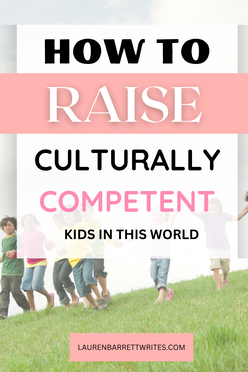
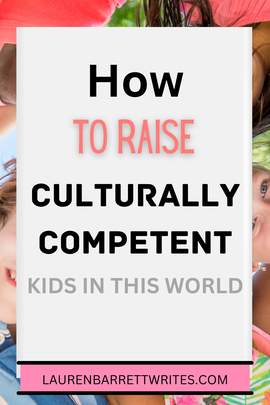
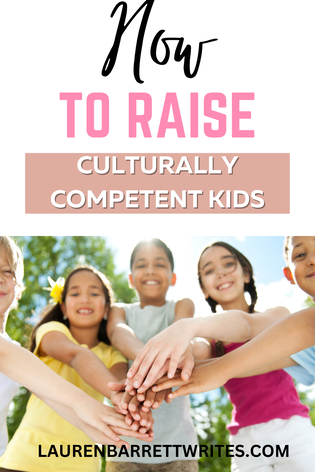


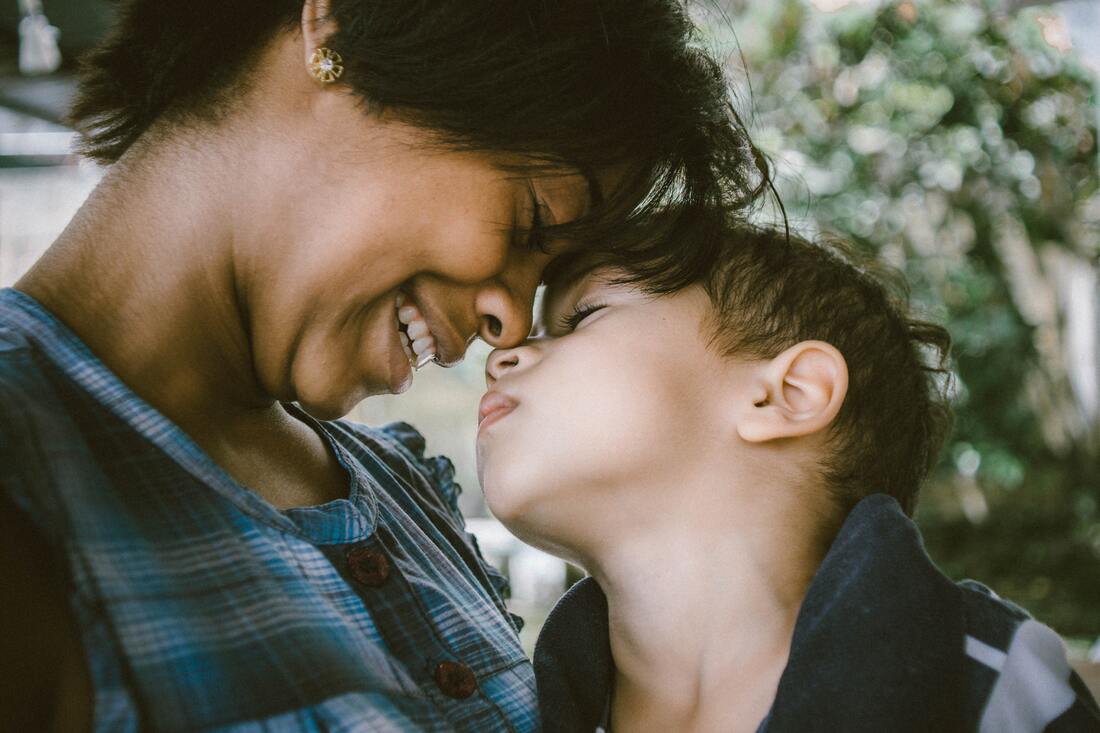
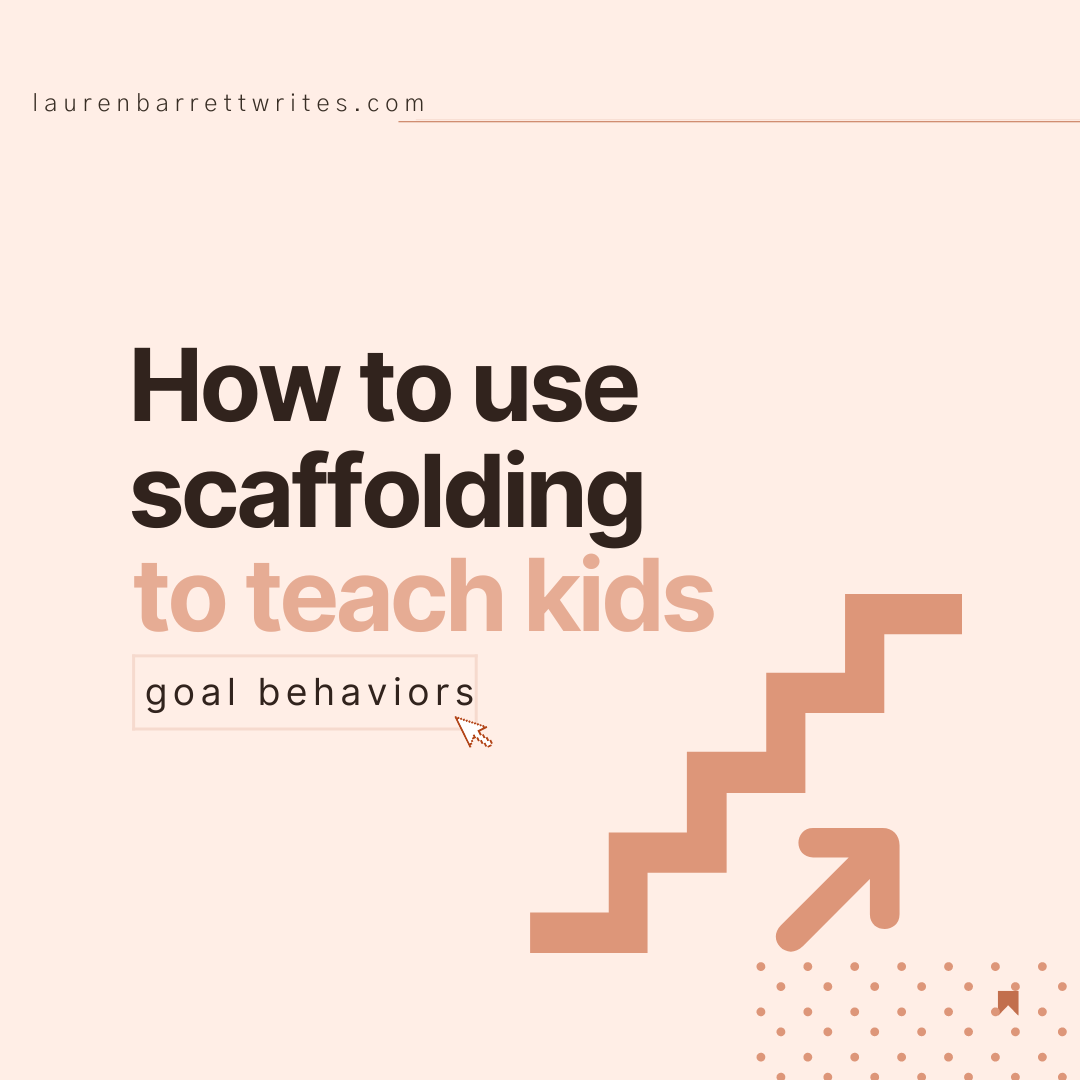
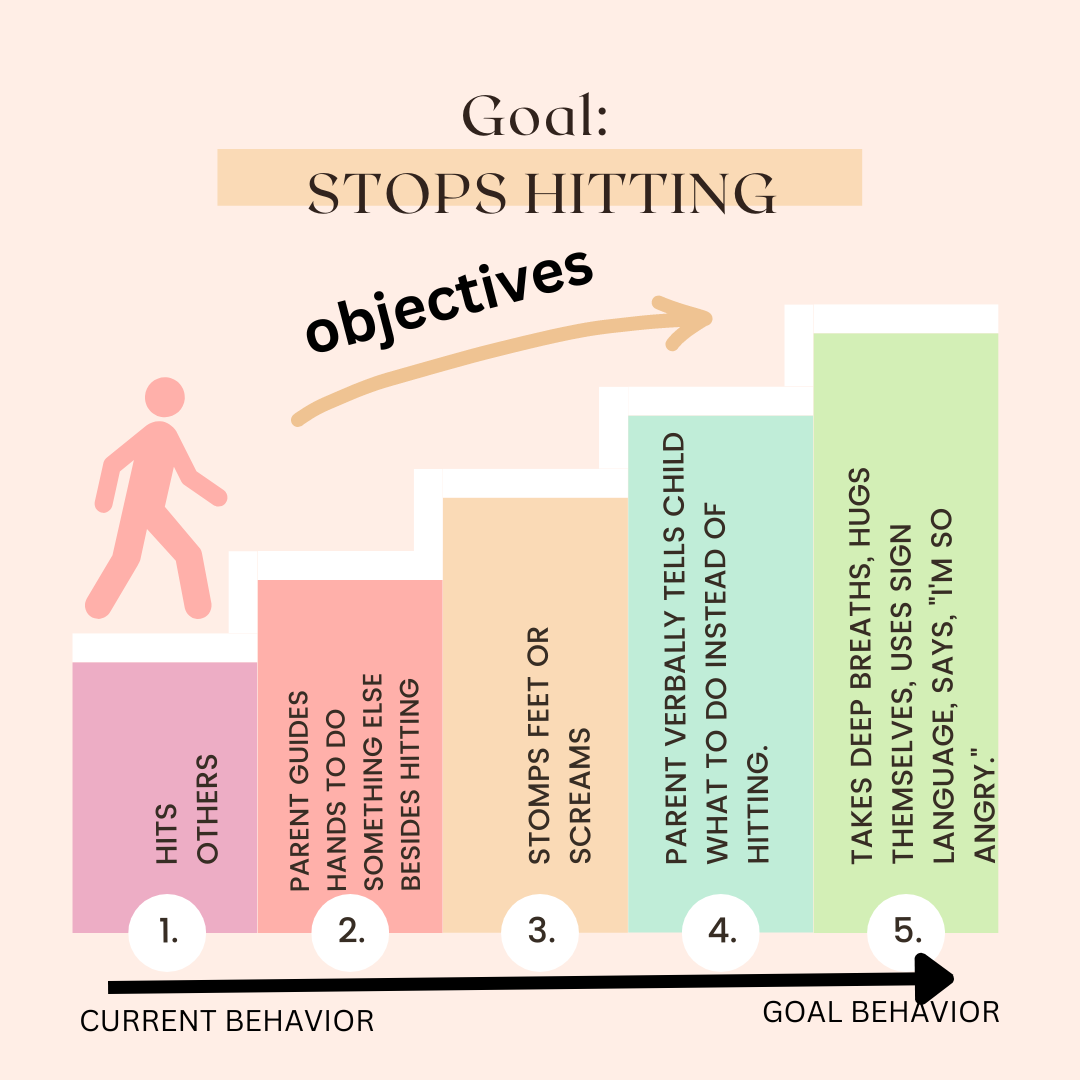
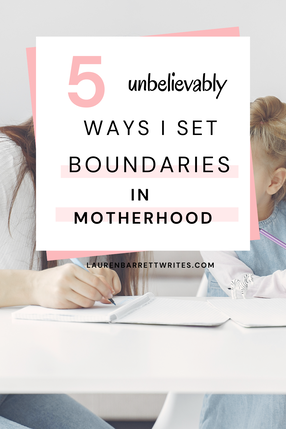
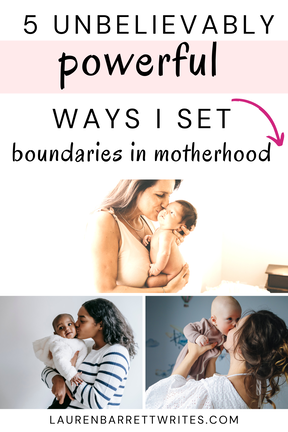
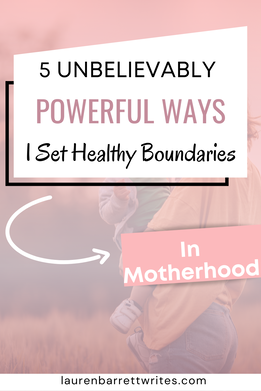

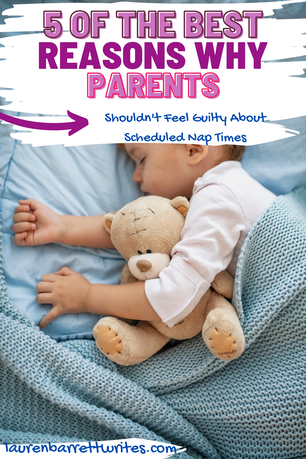

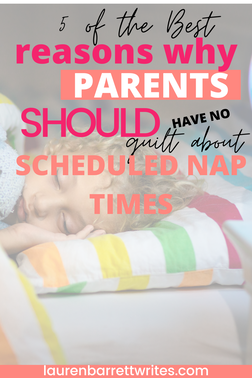

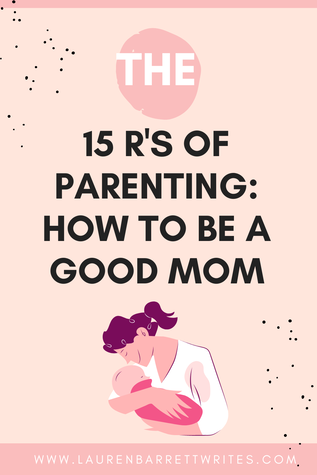

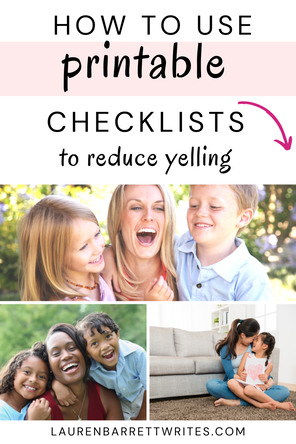
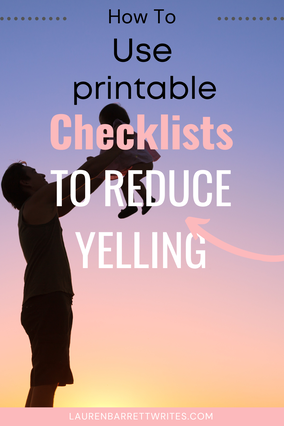
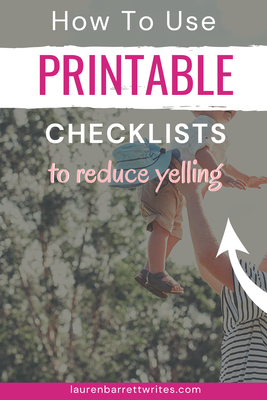


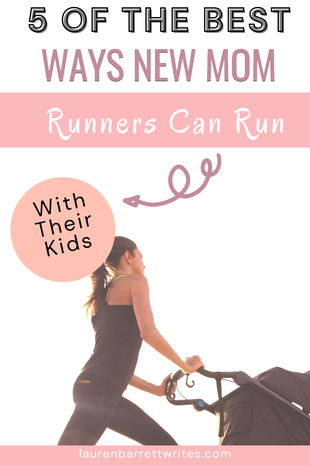
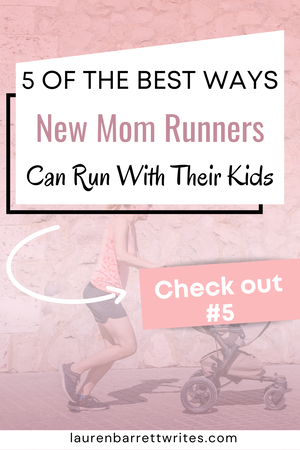
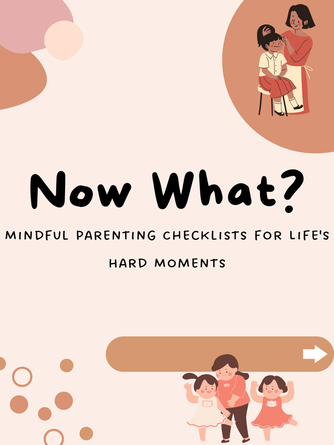

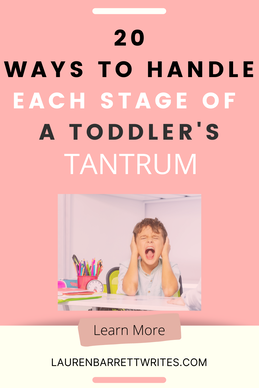
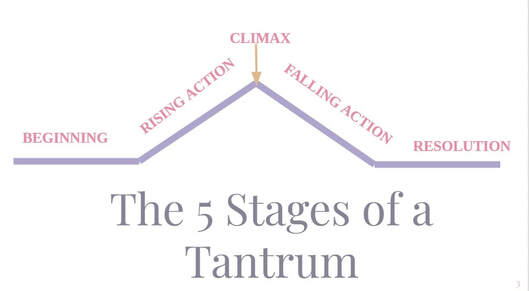
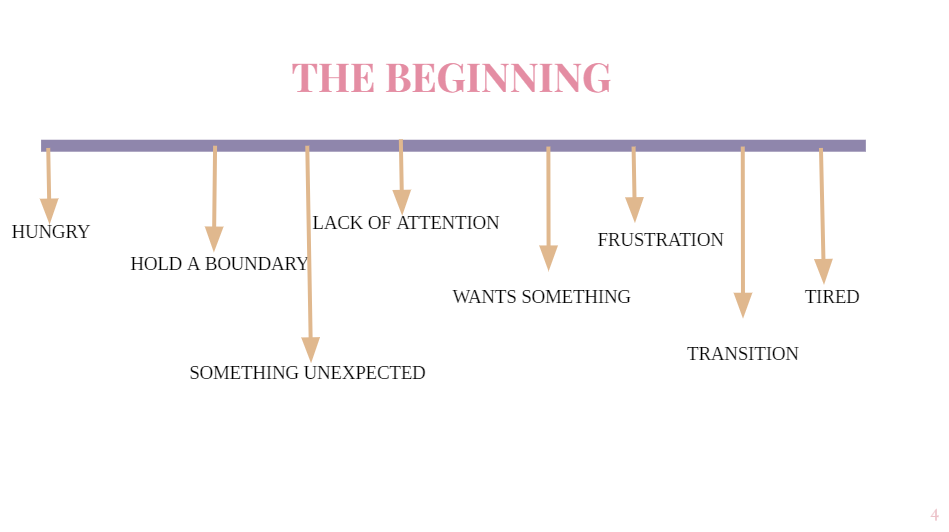
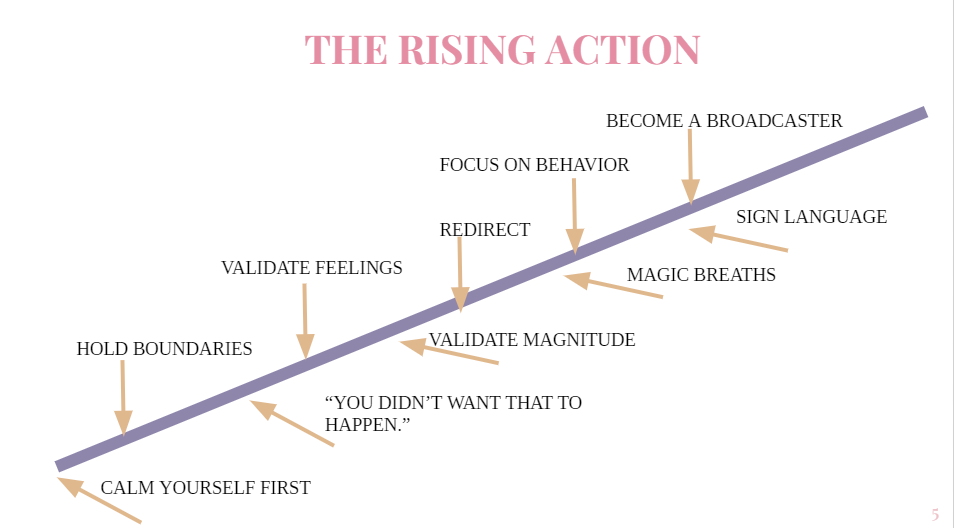
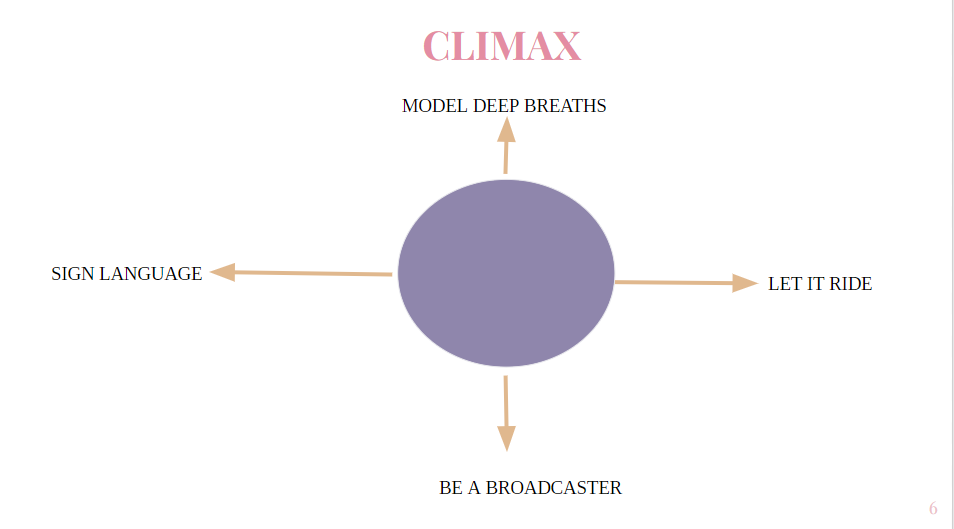
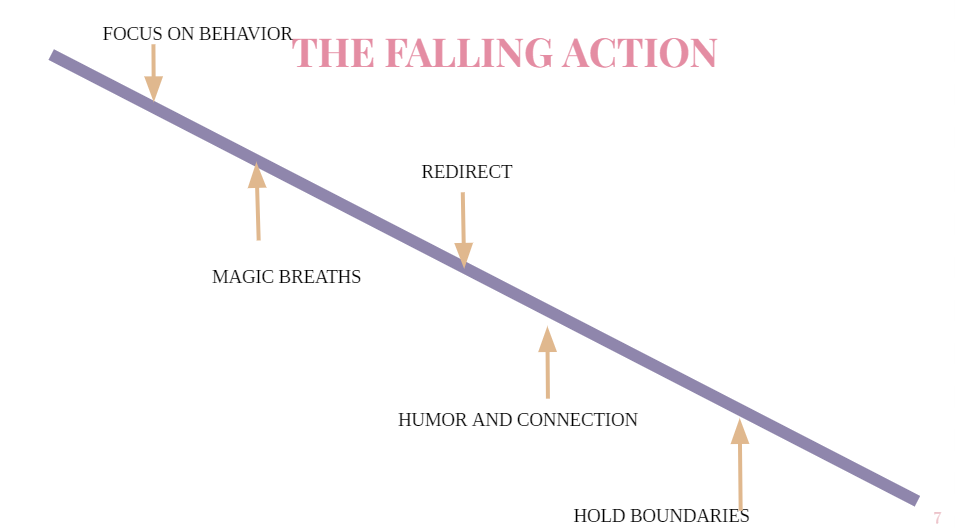
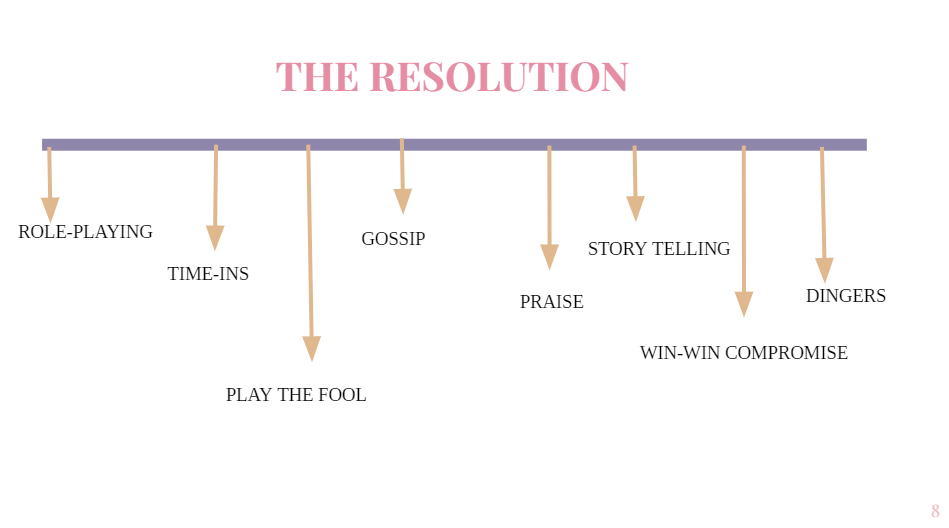


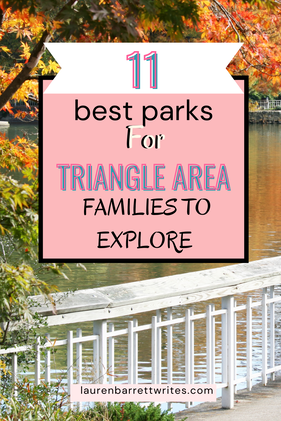
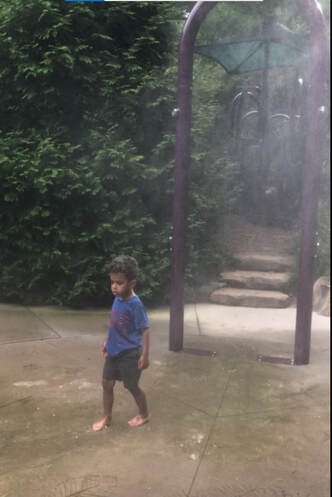
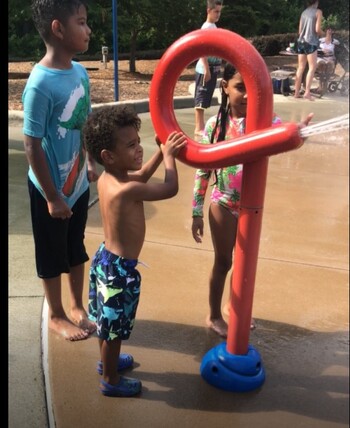
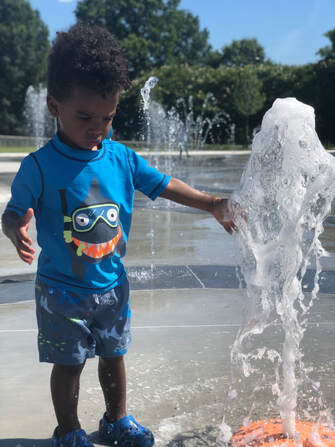
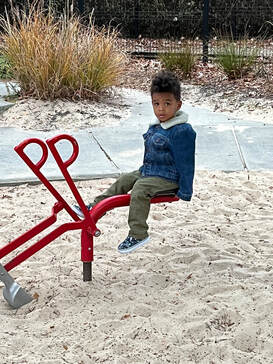

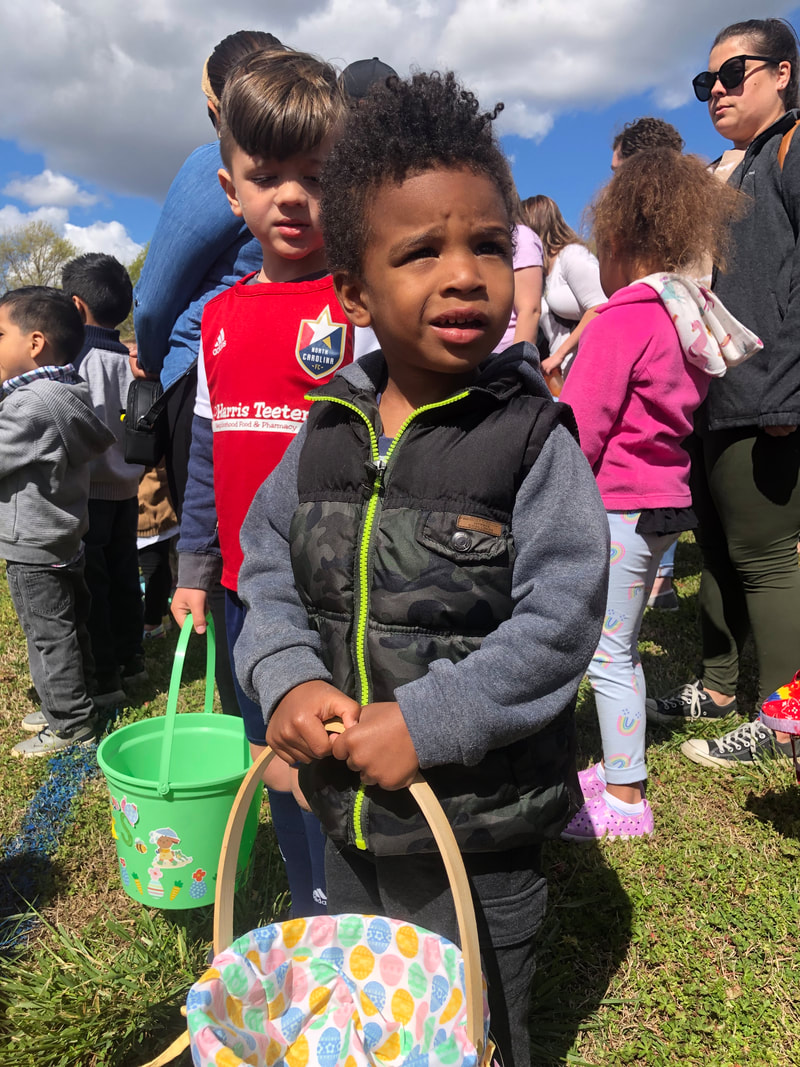
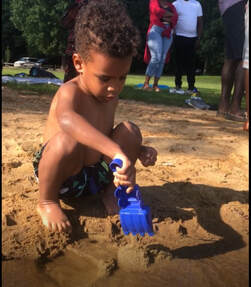
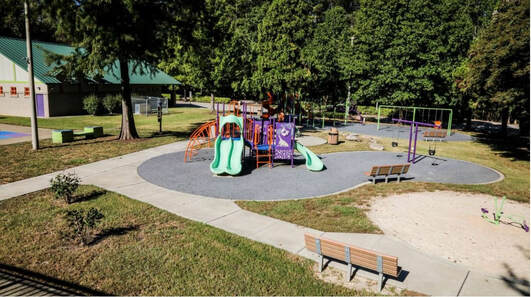
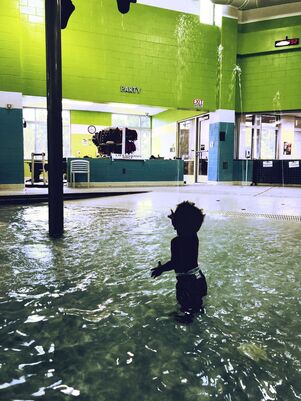
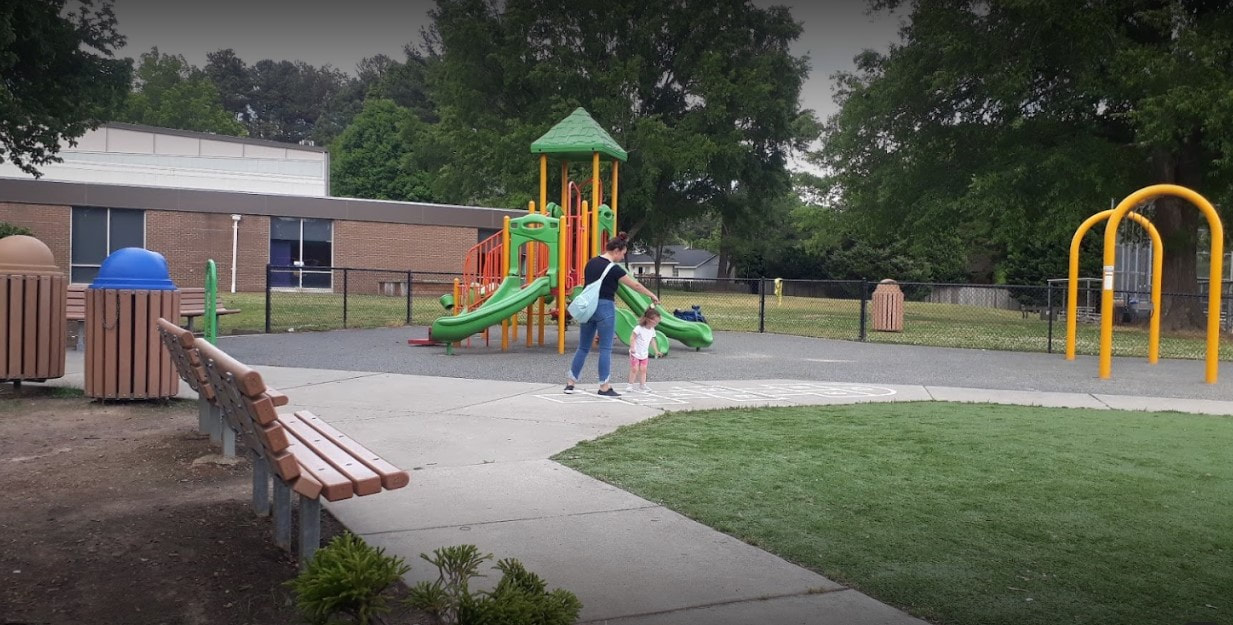
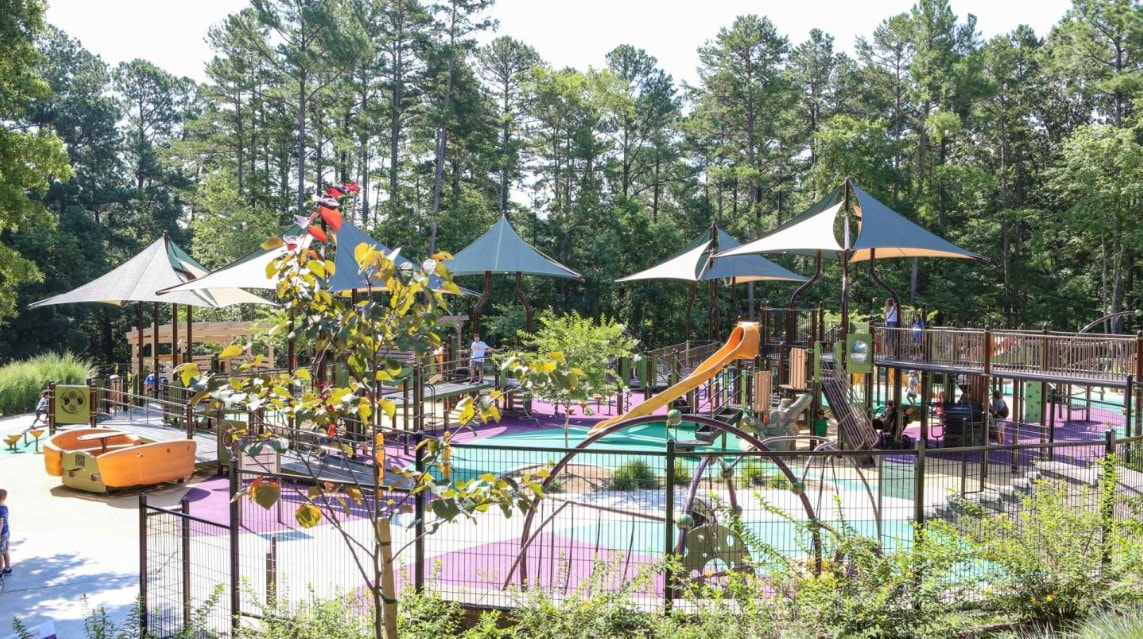
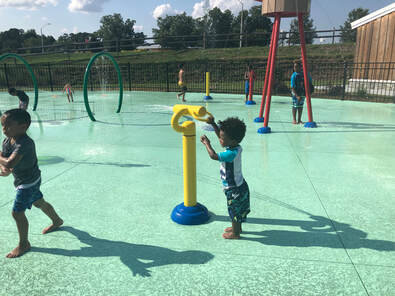
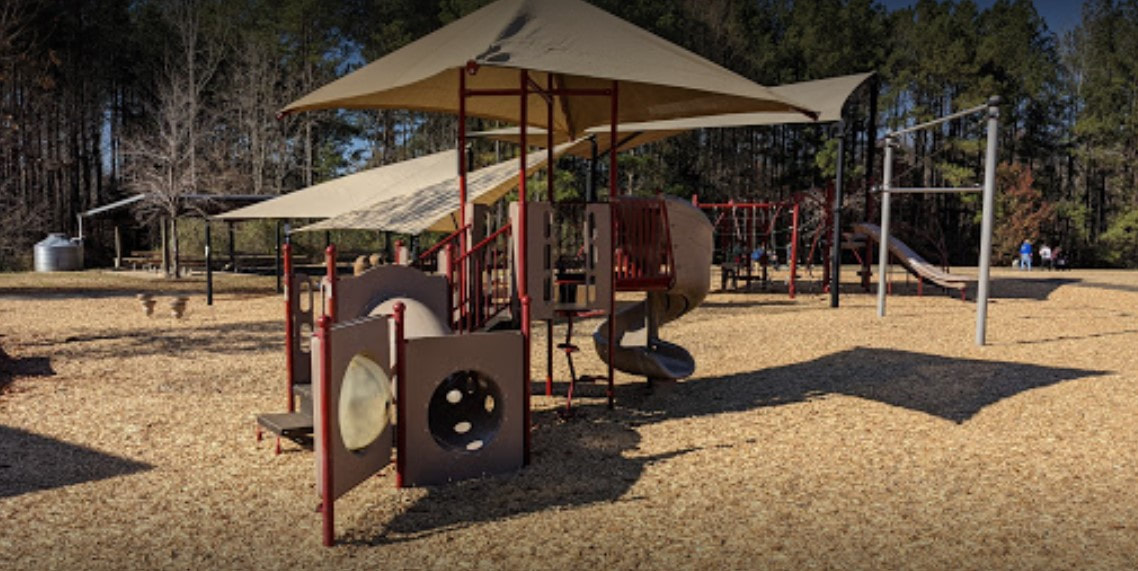
 RSS Feed
RSS Feed